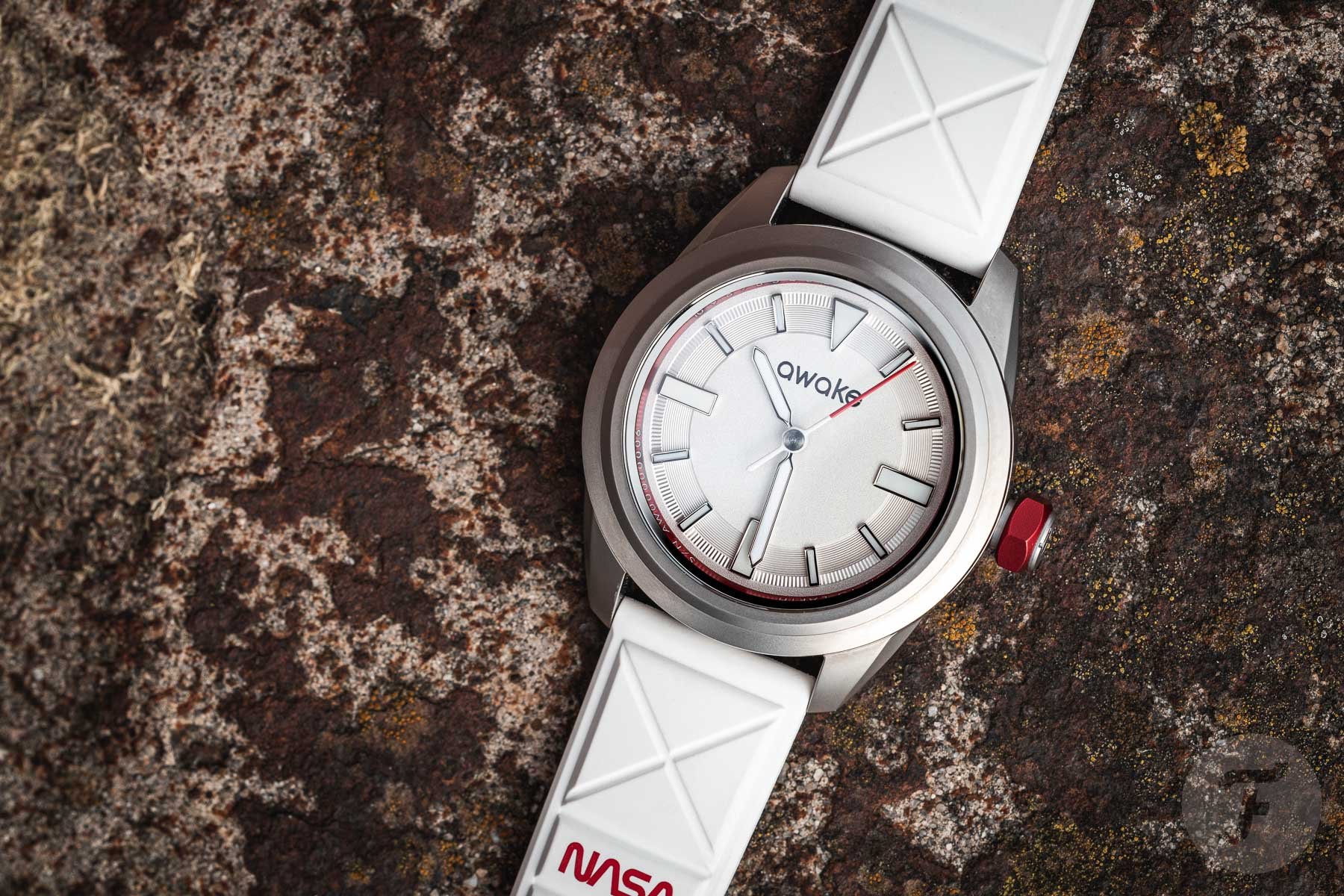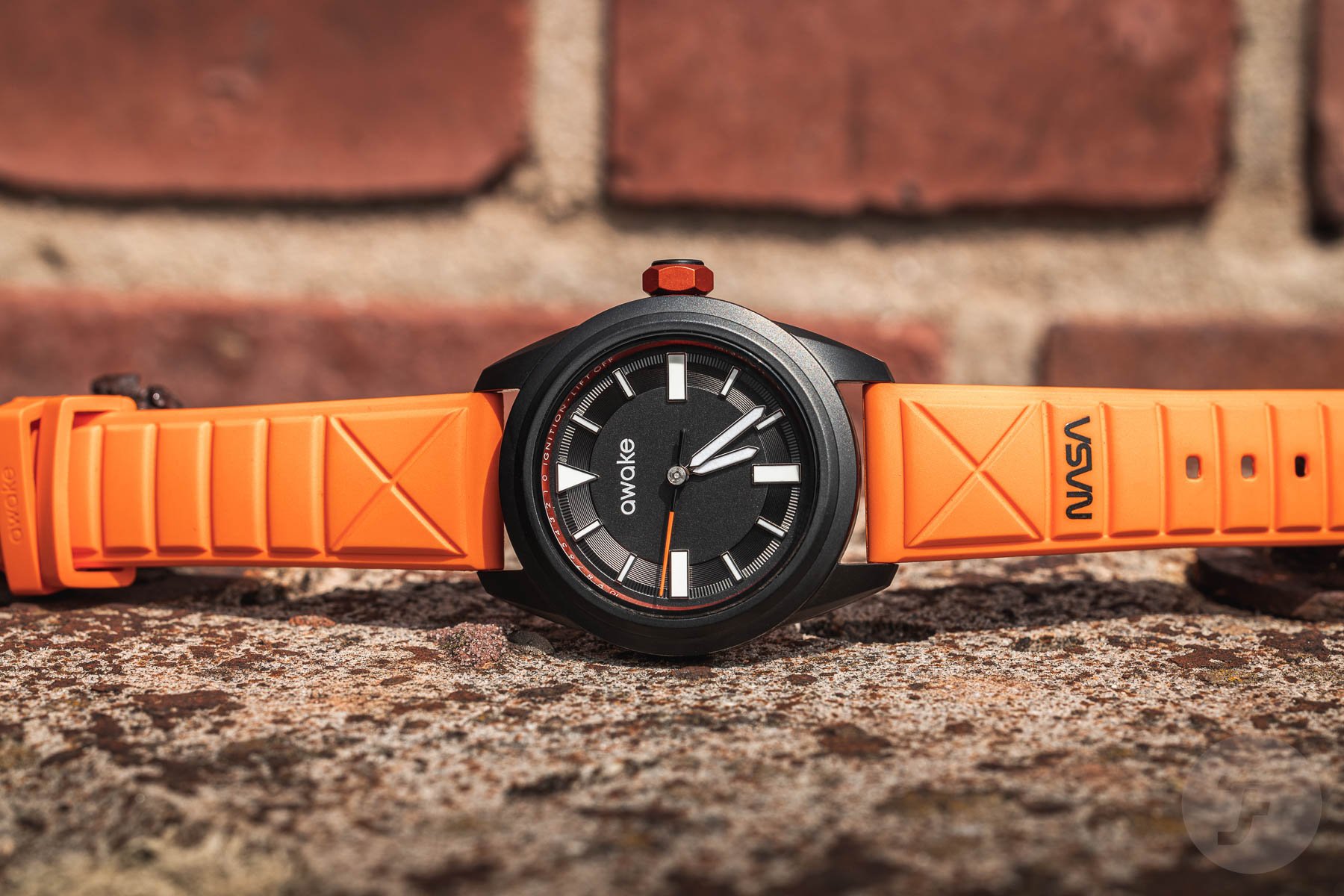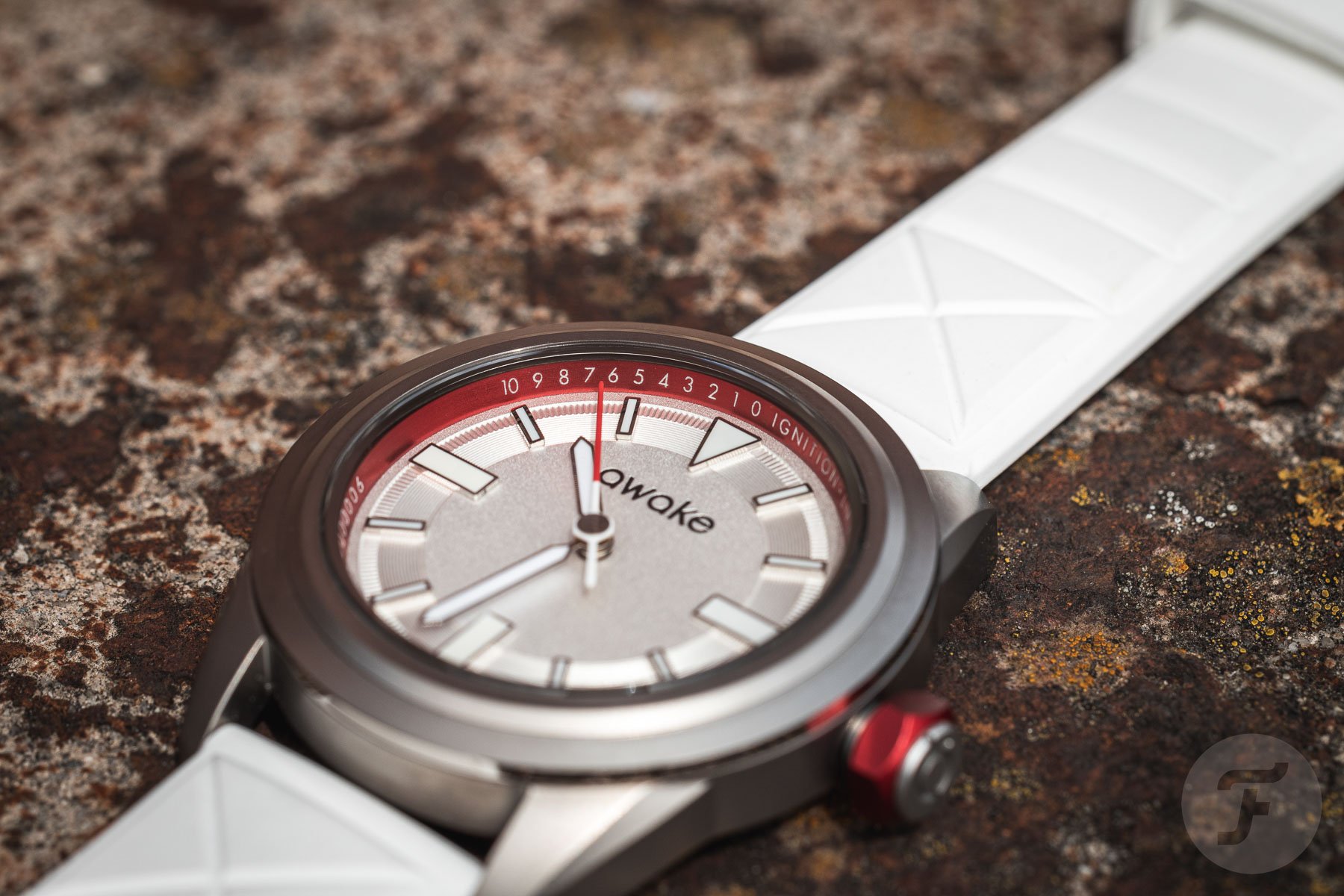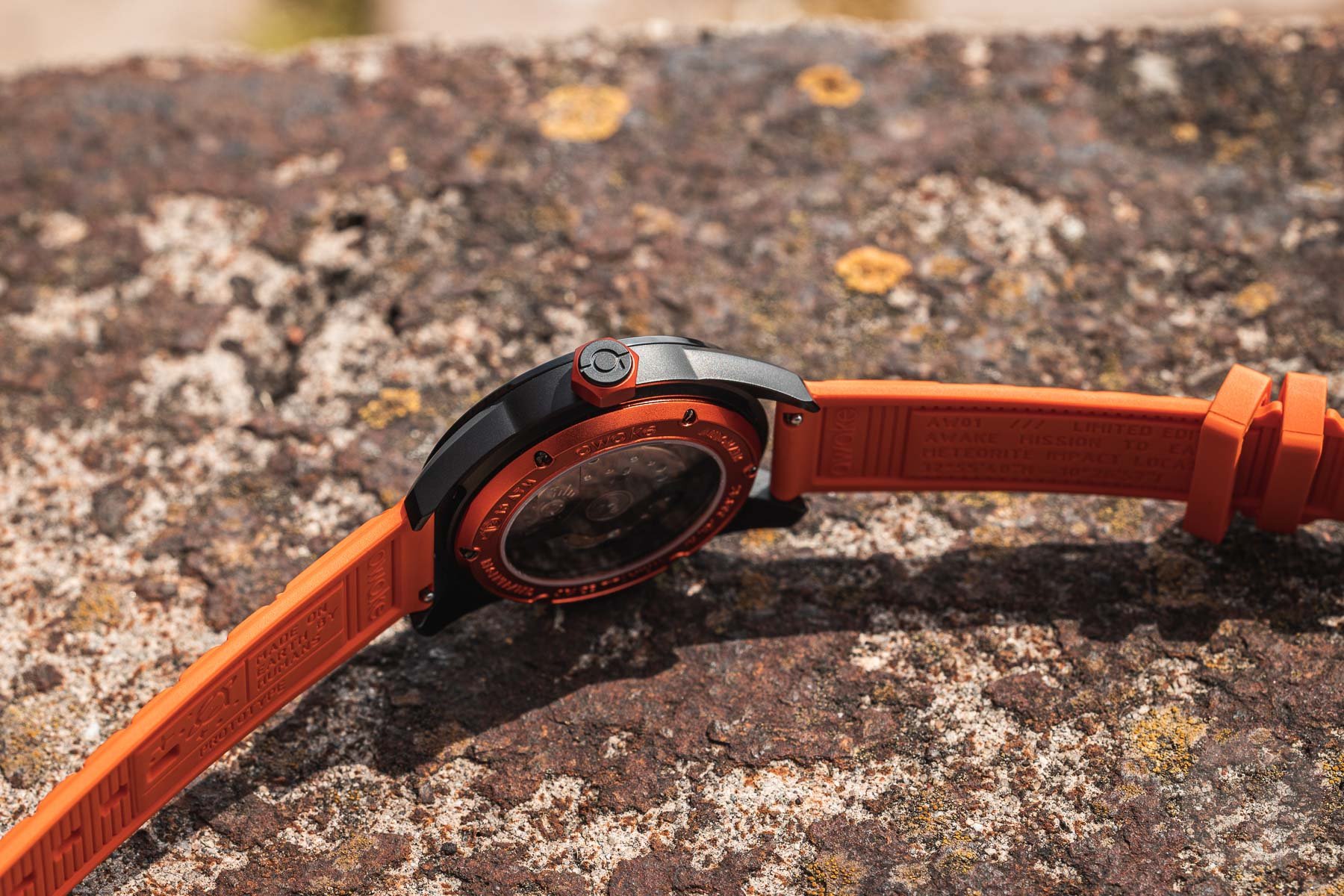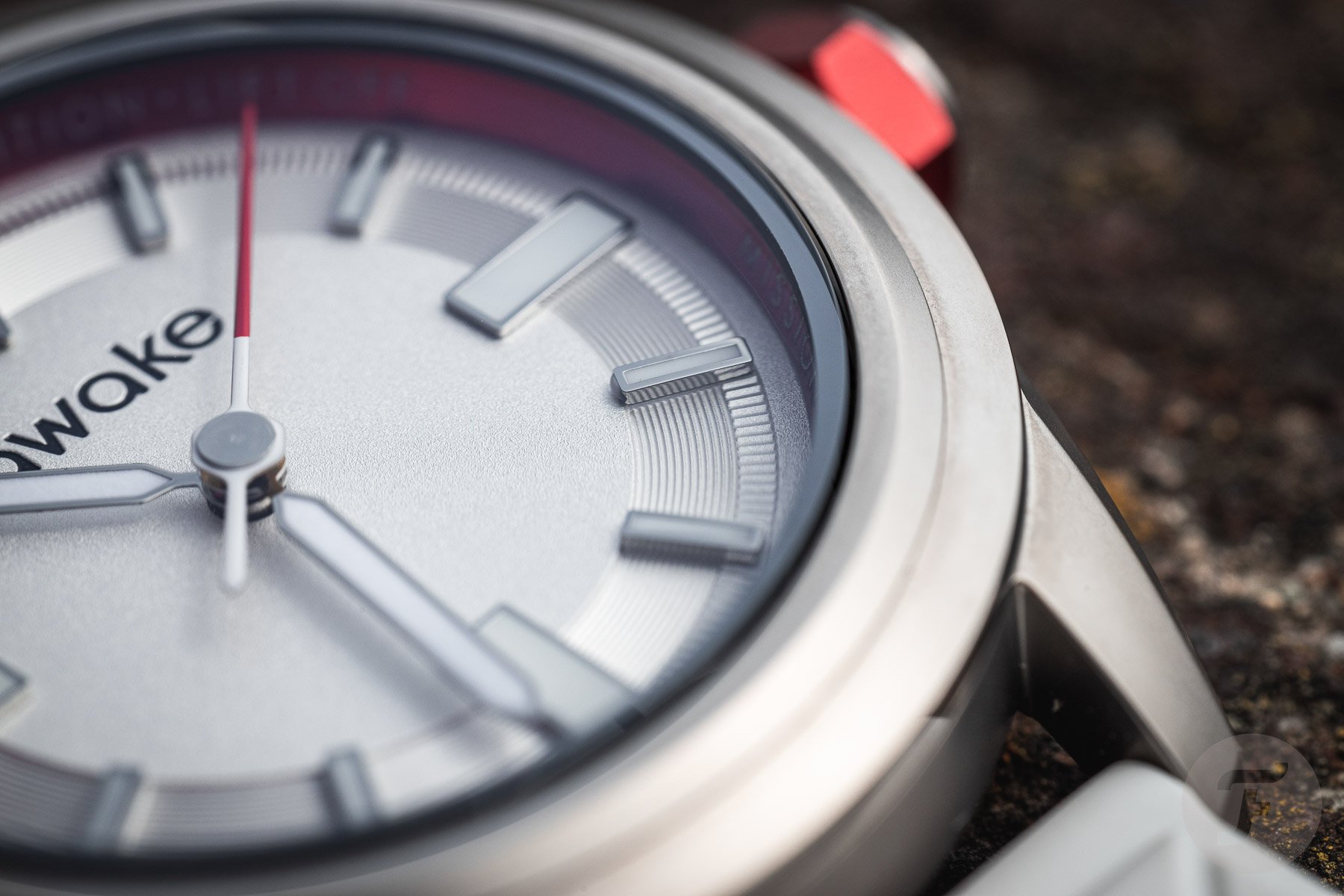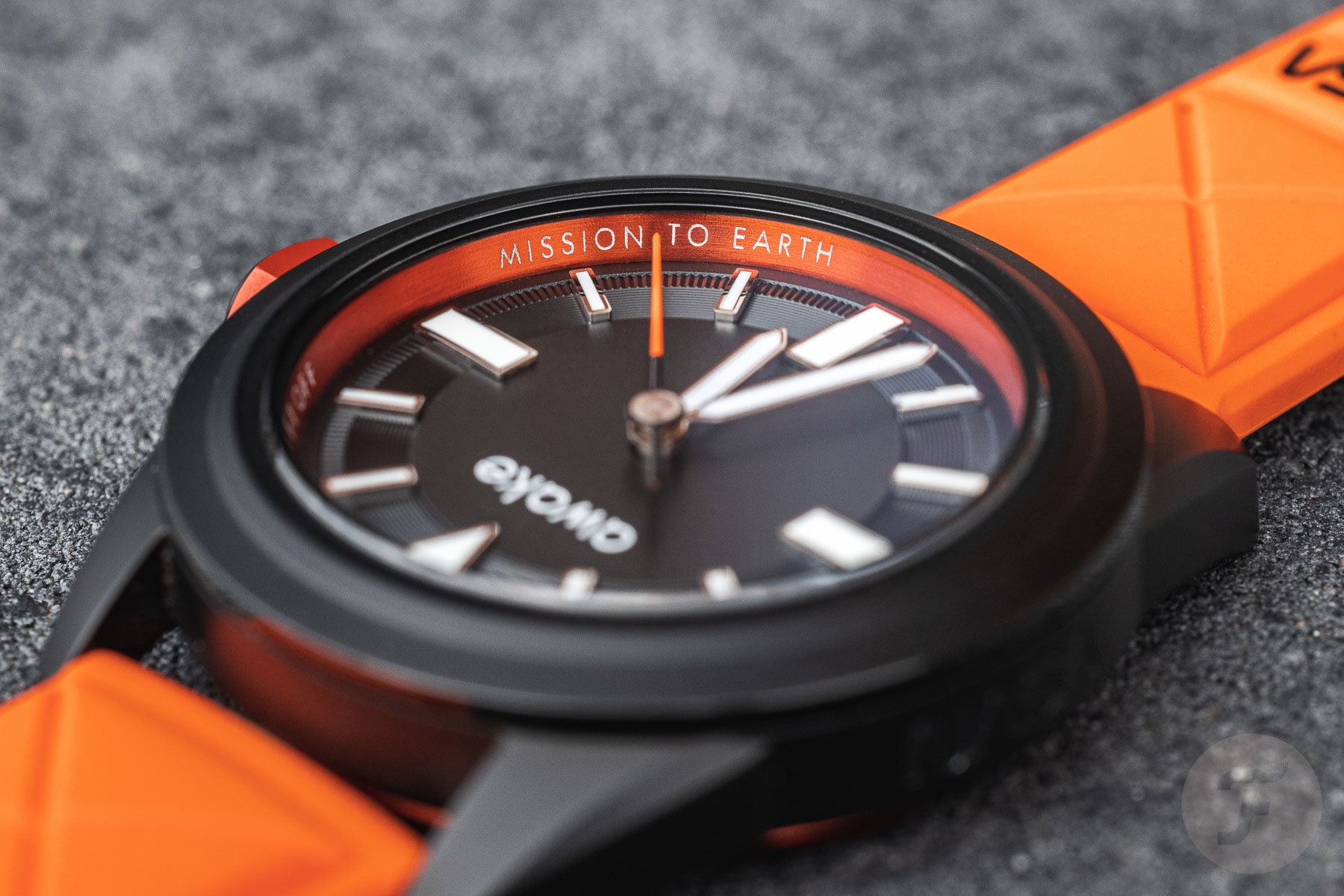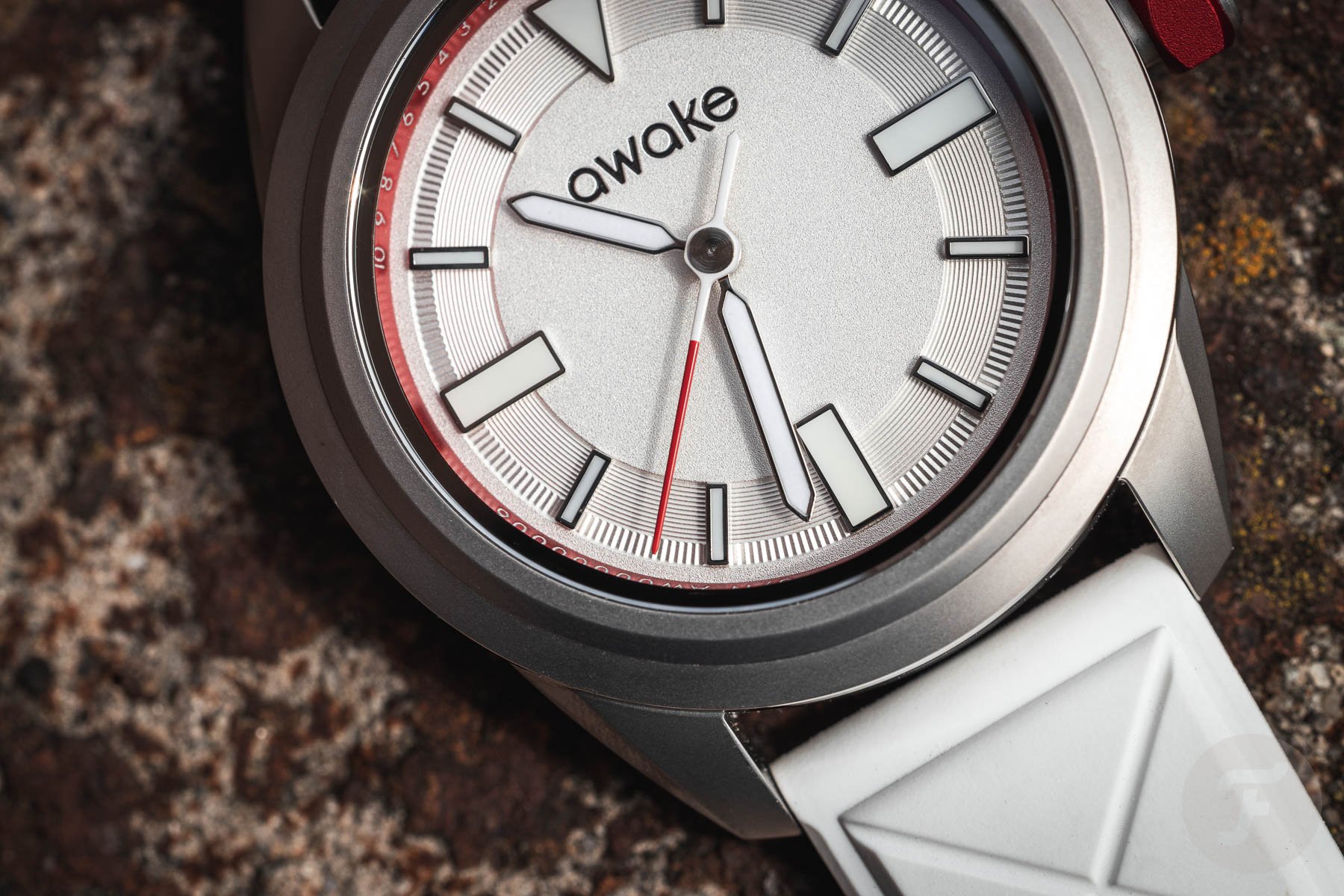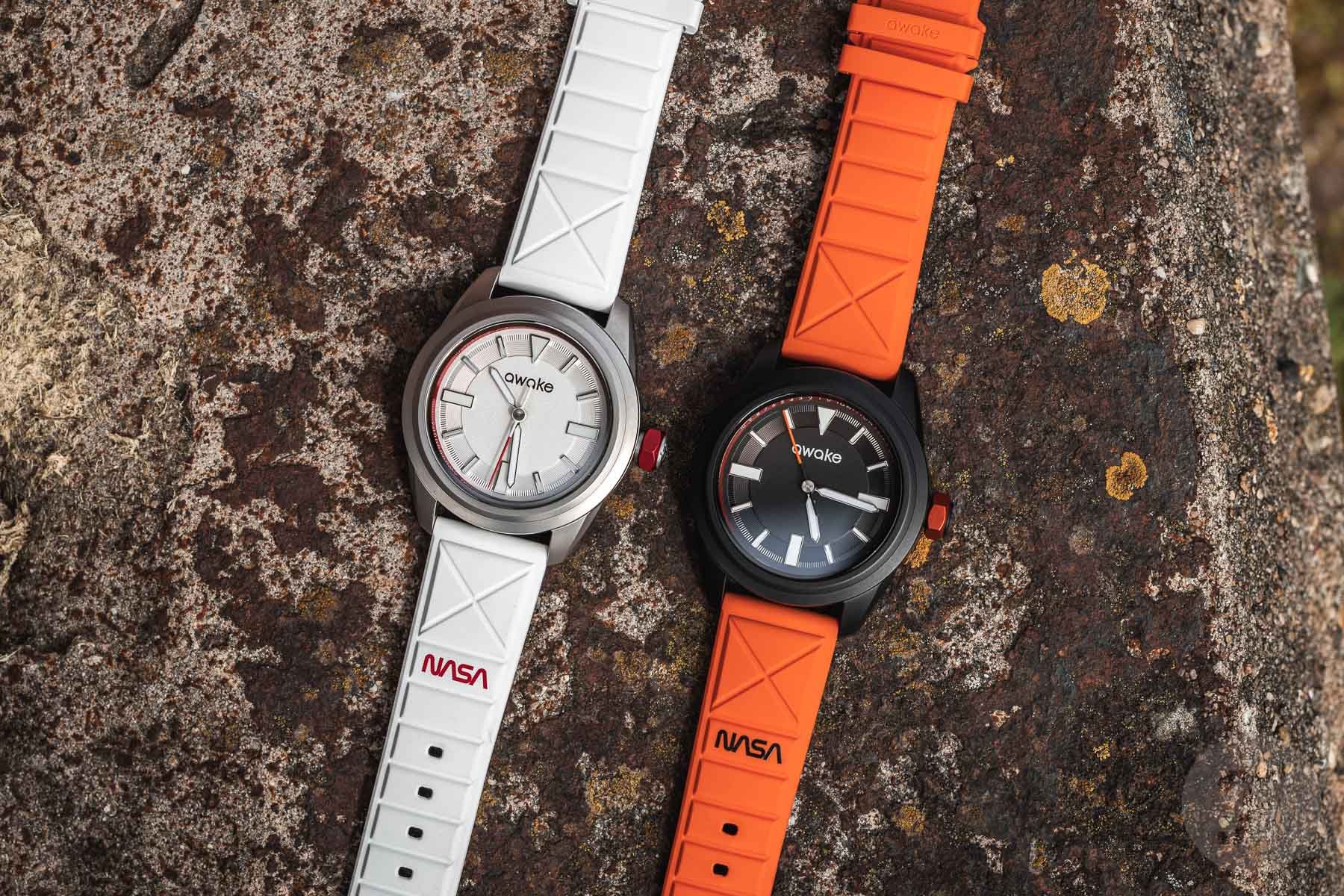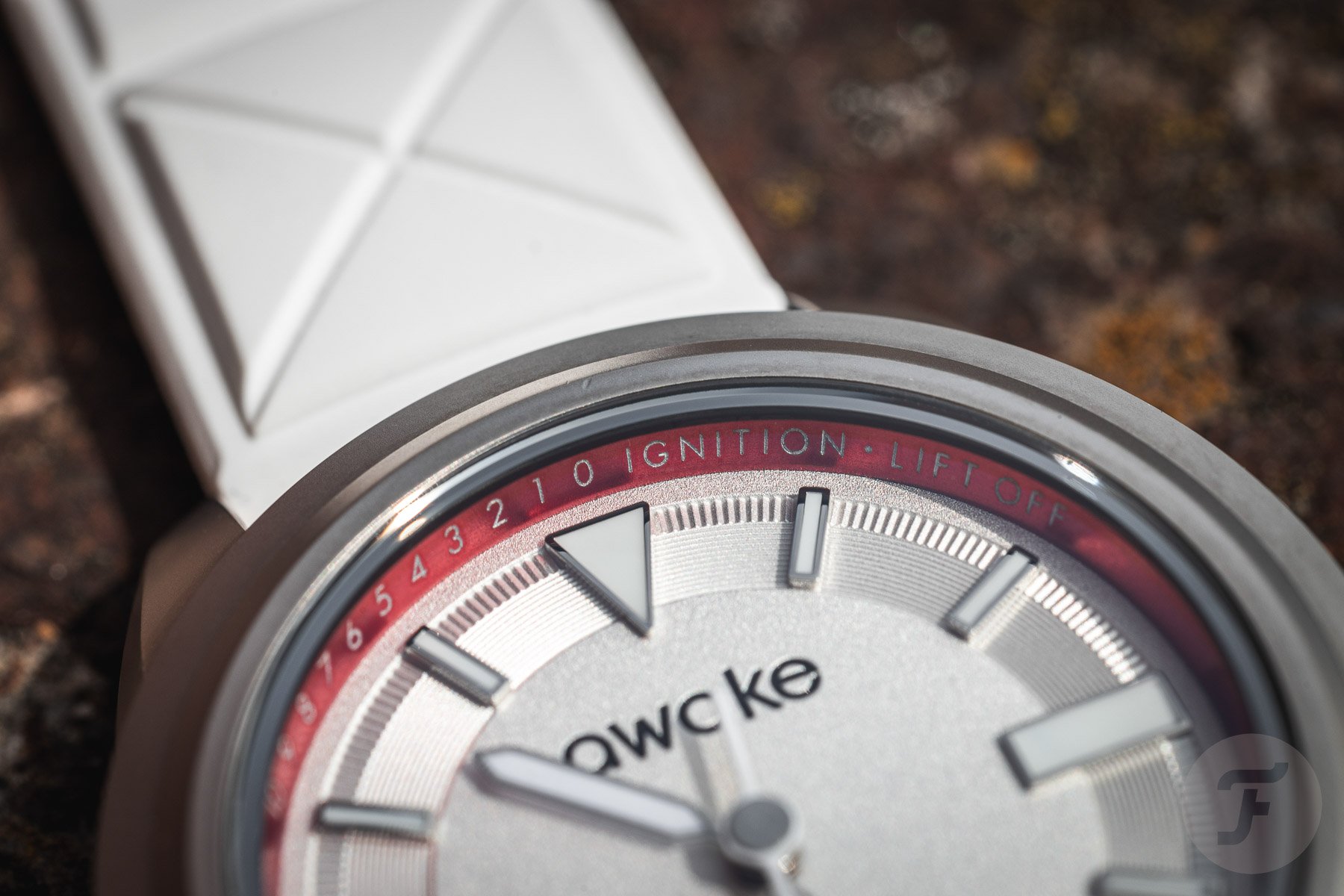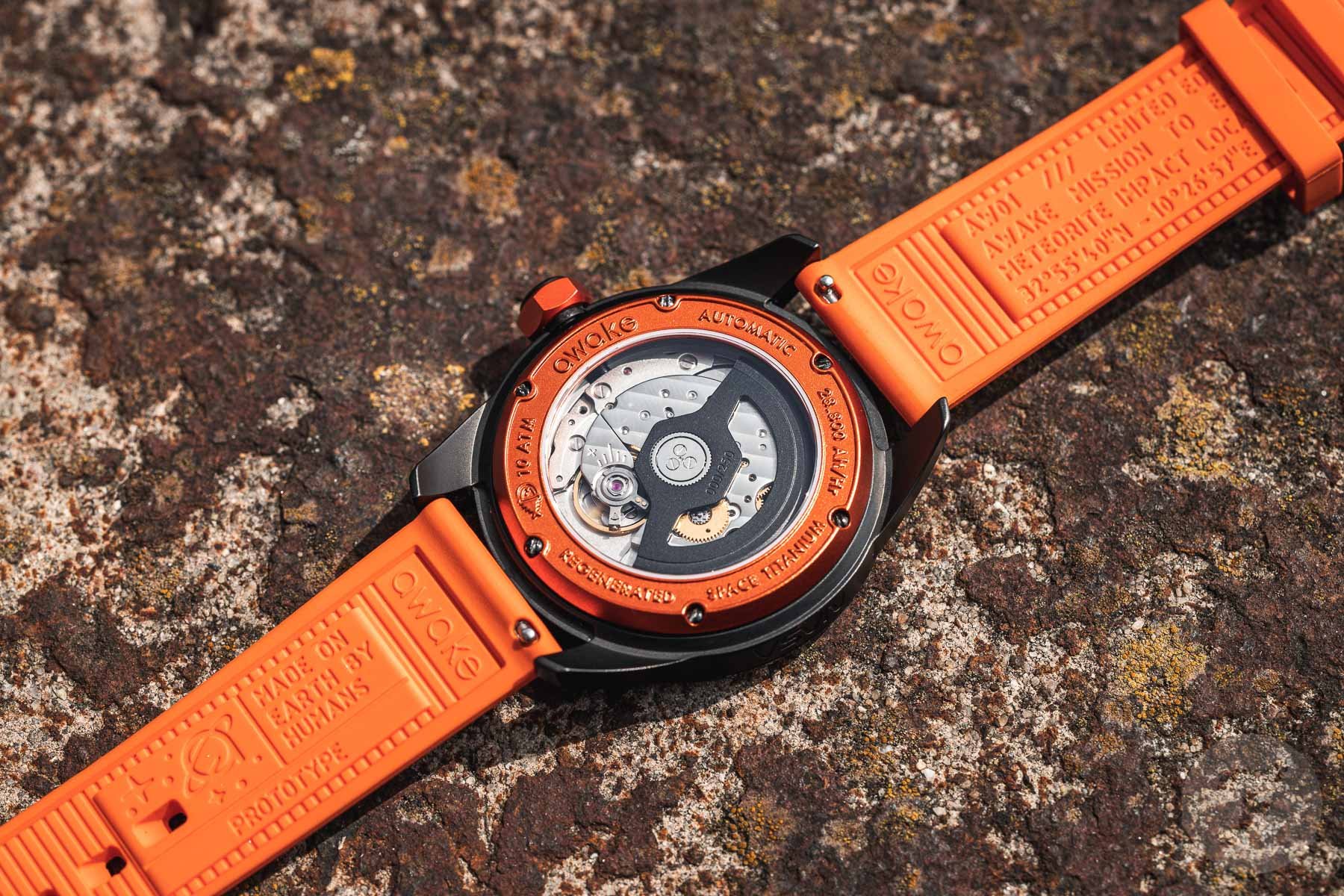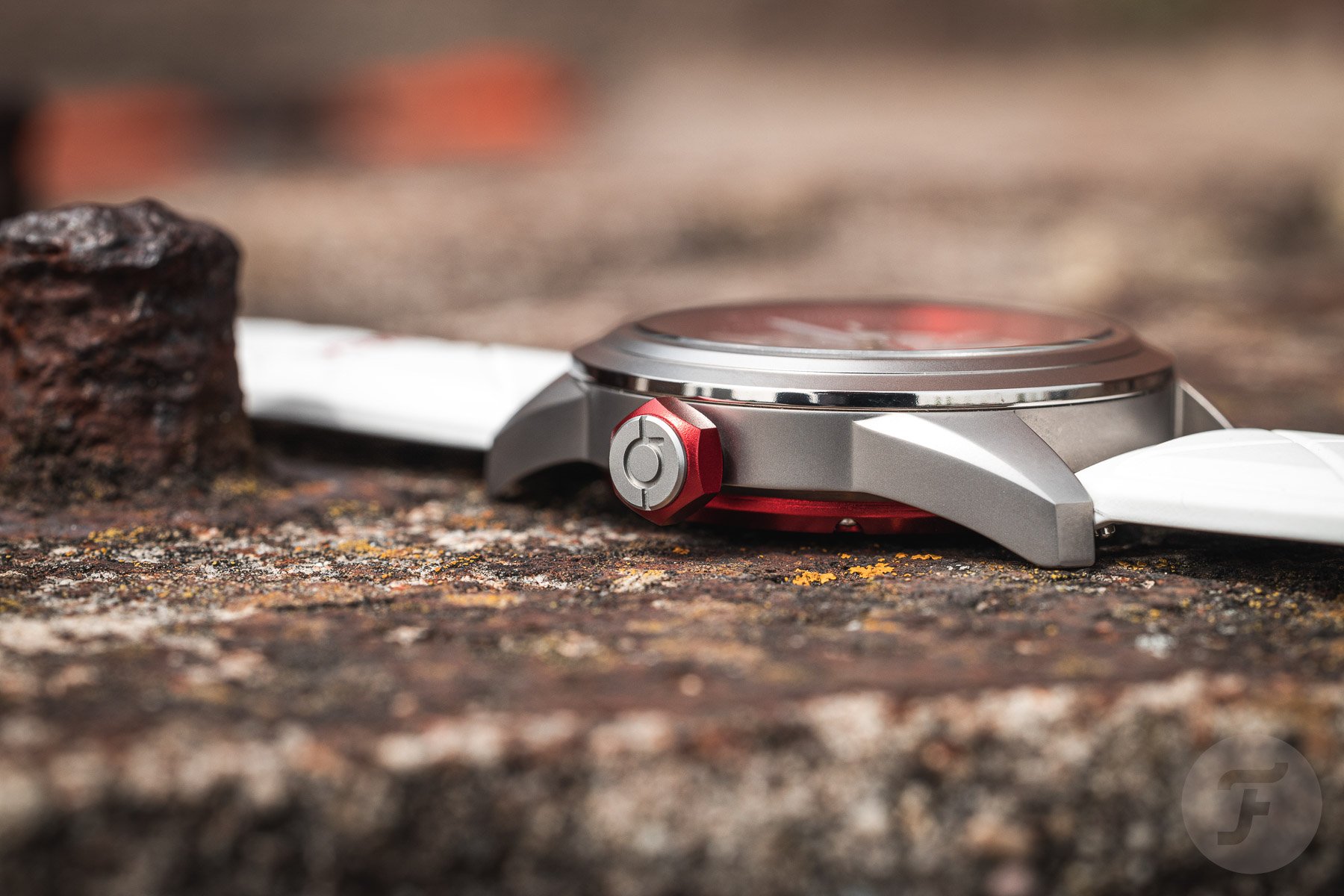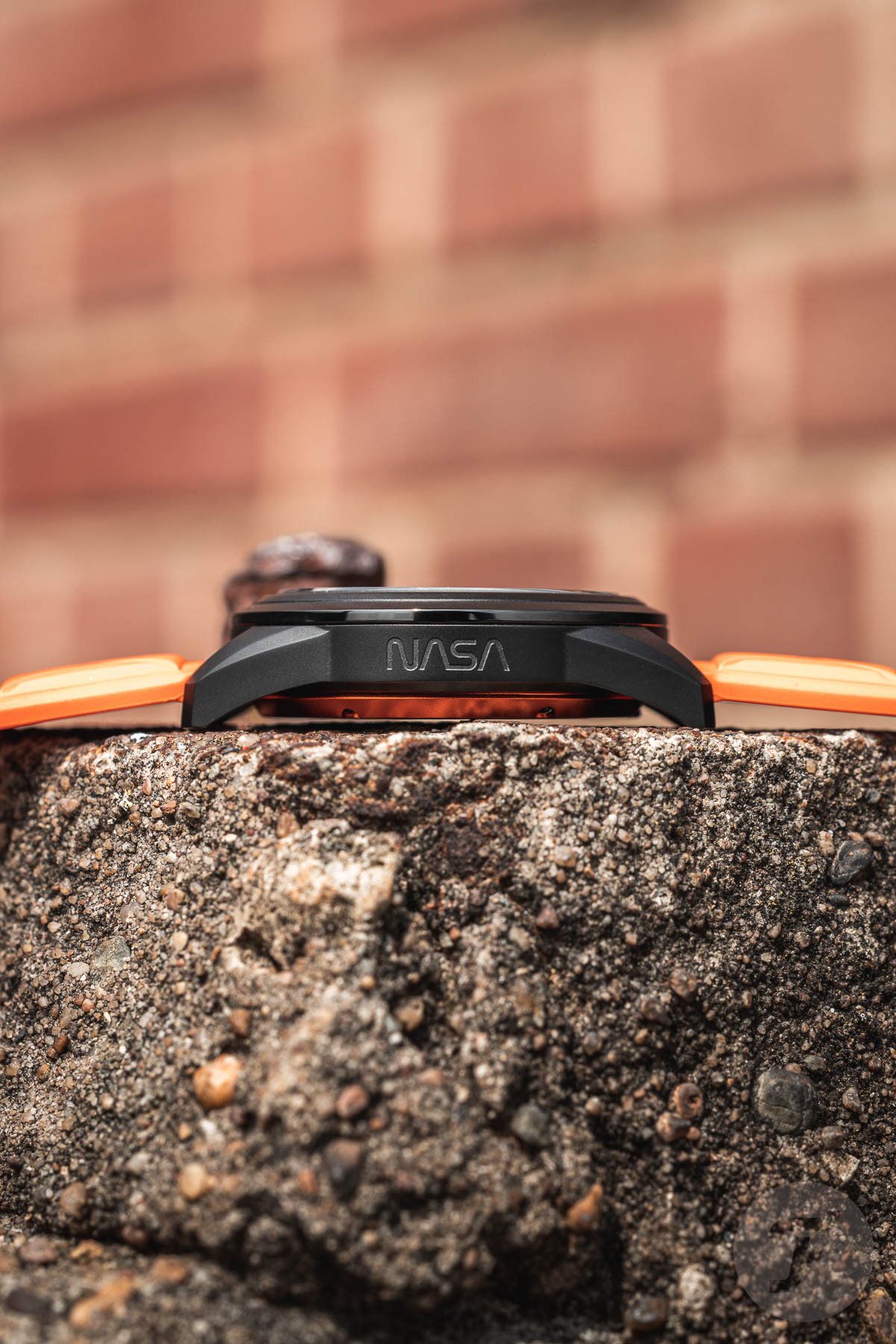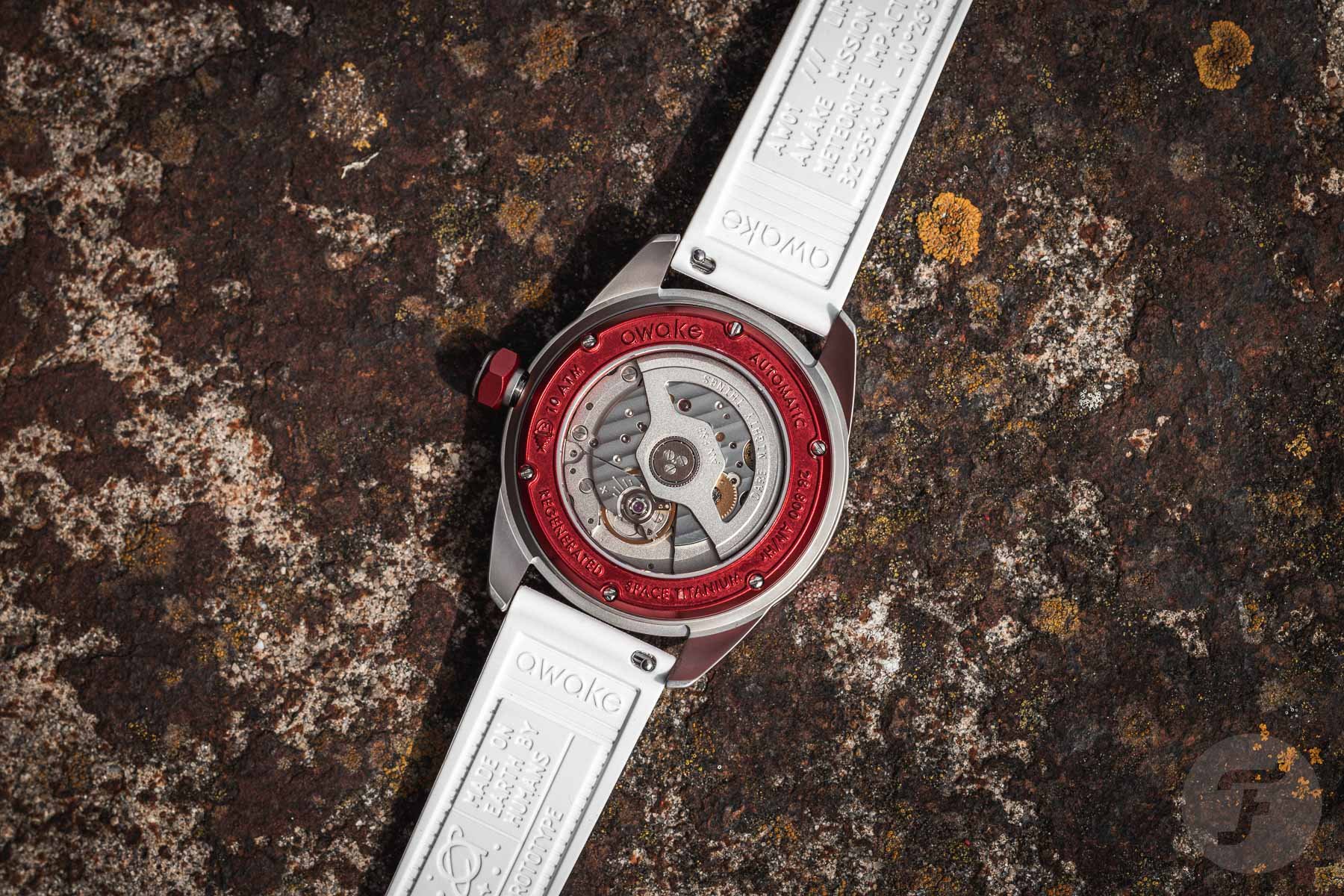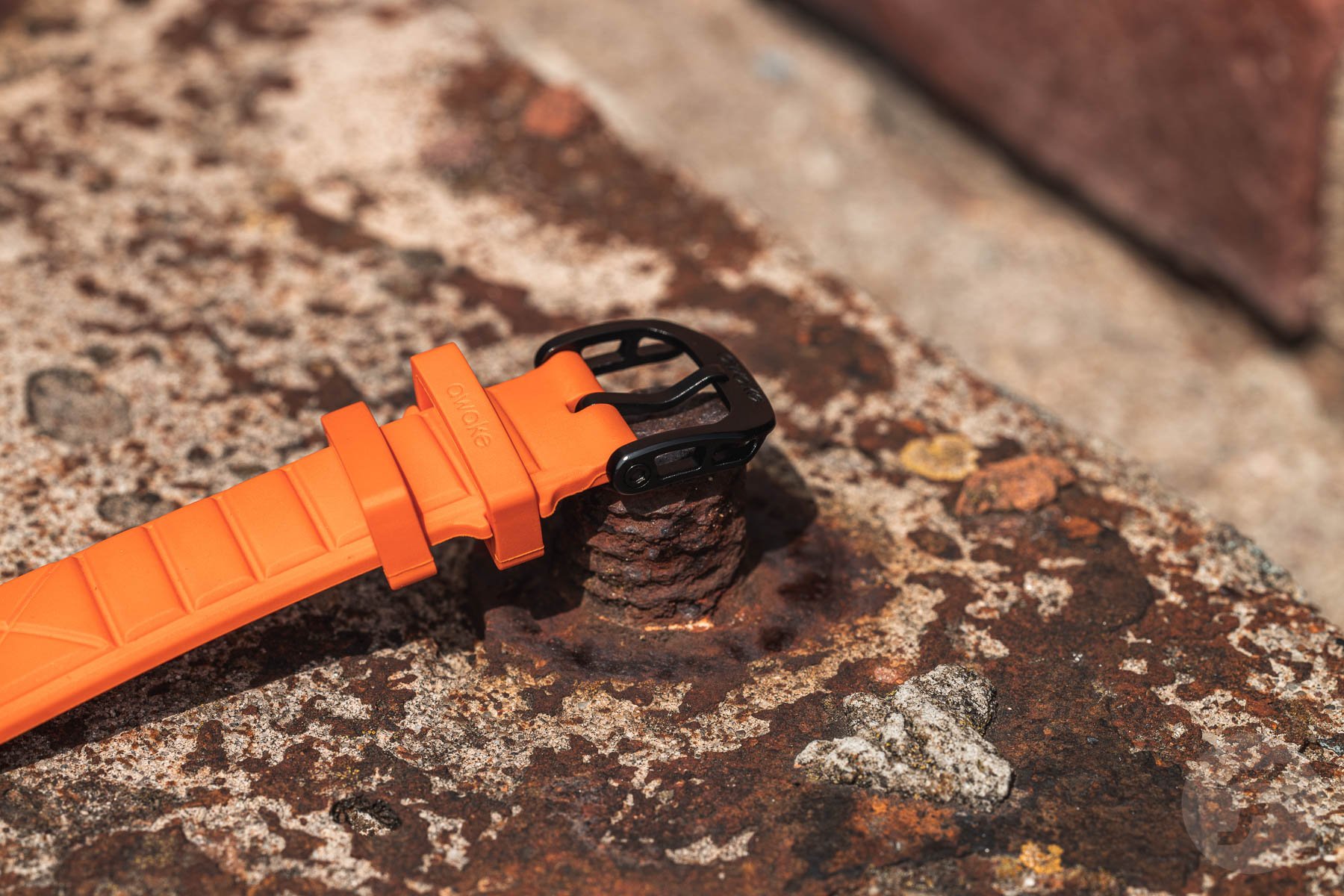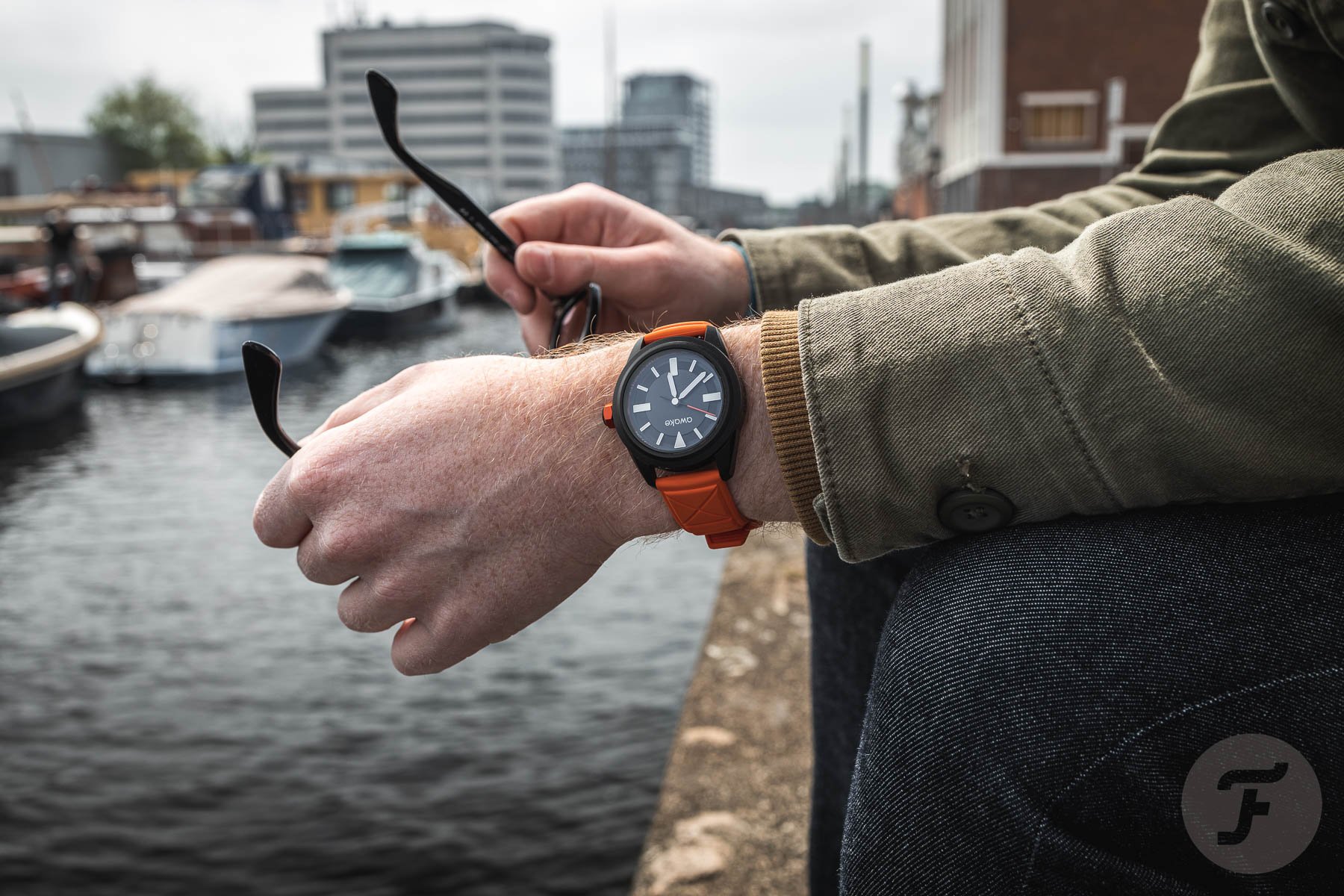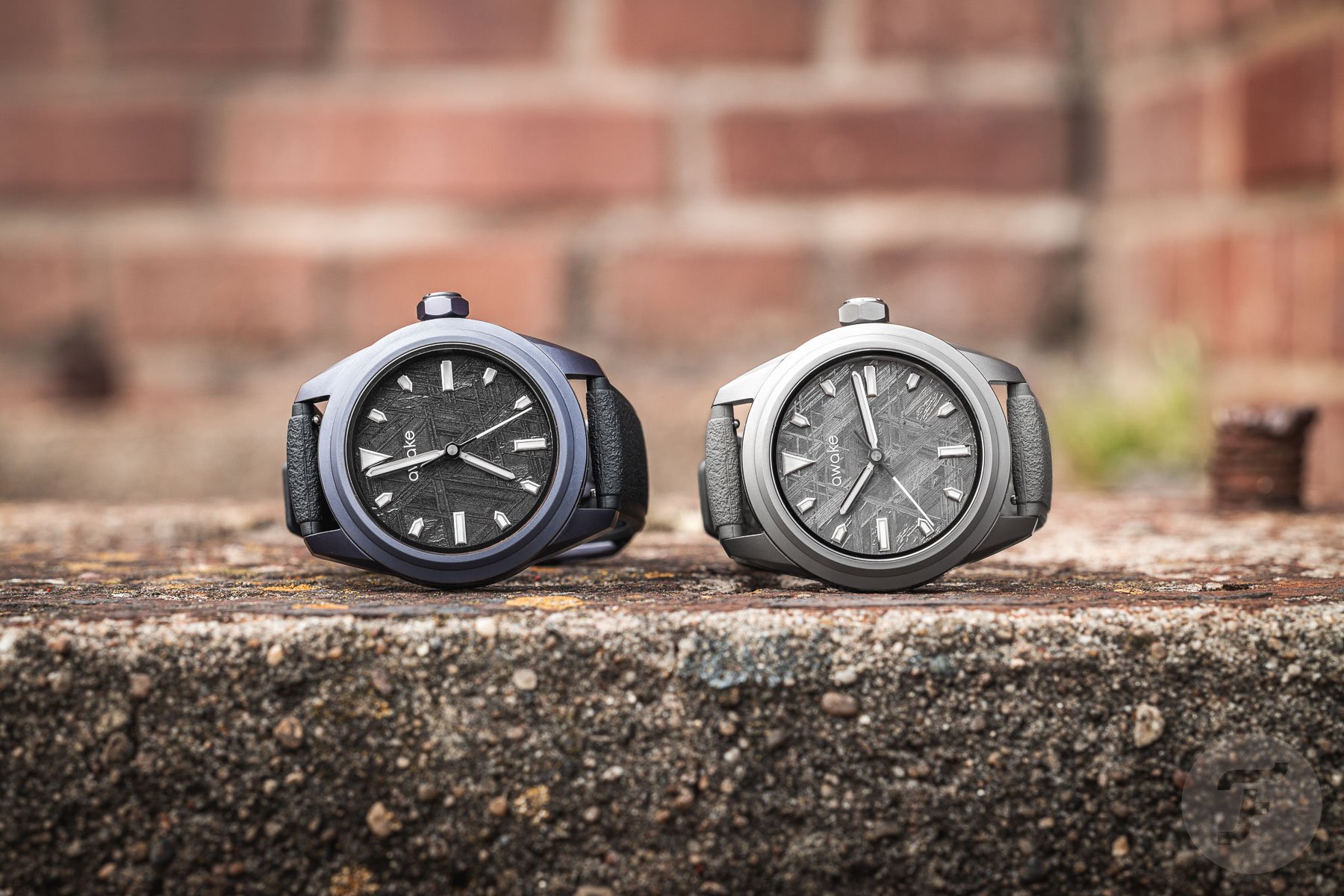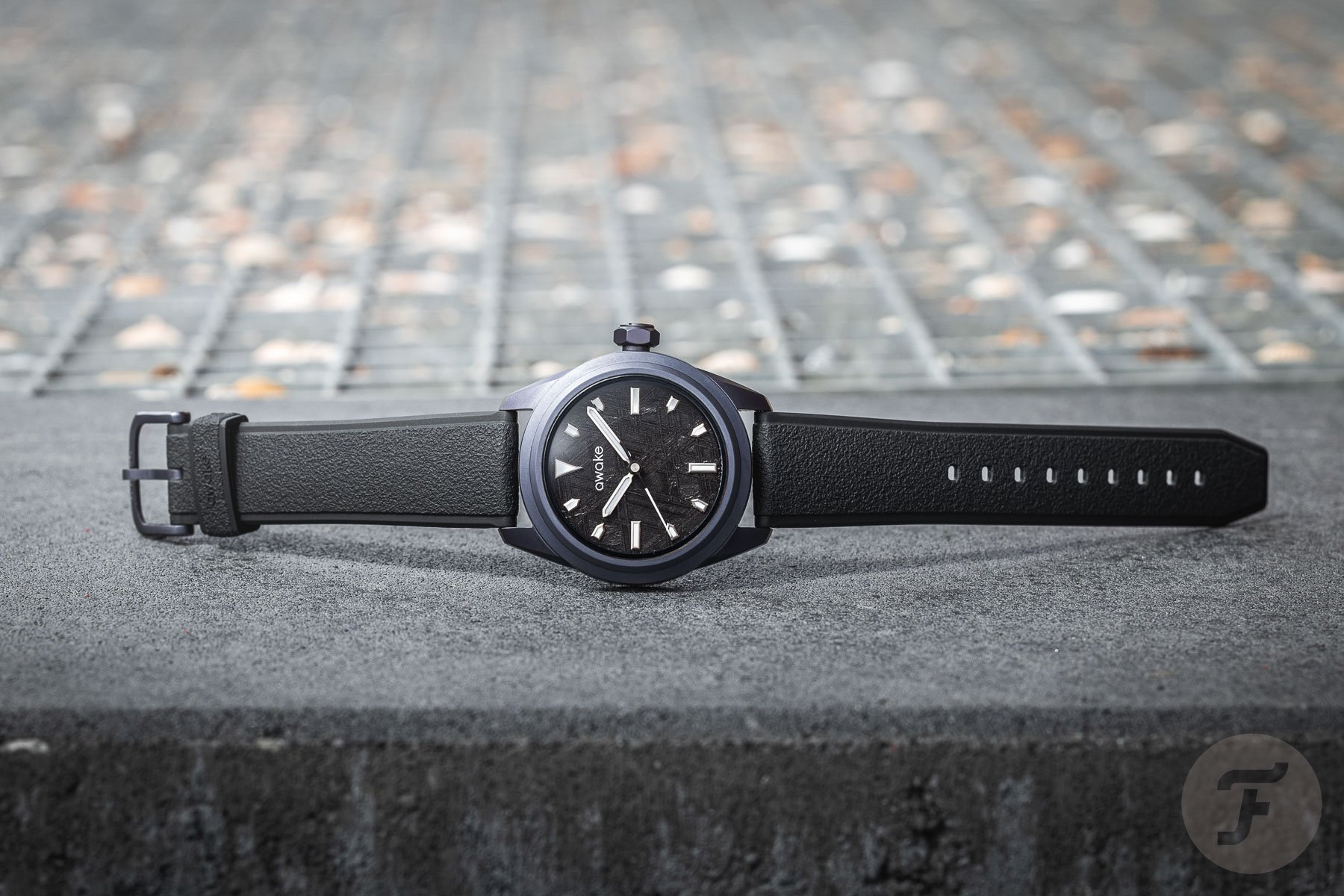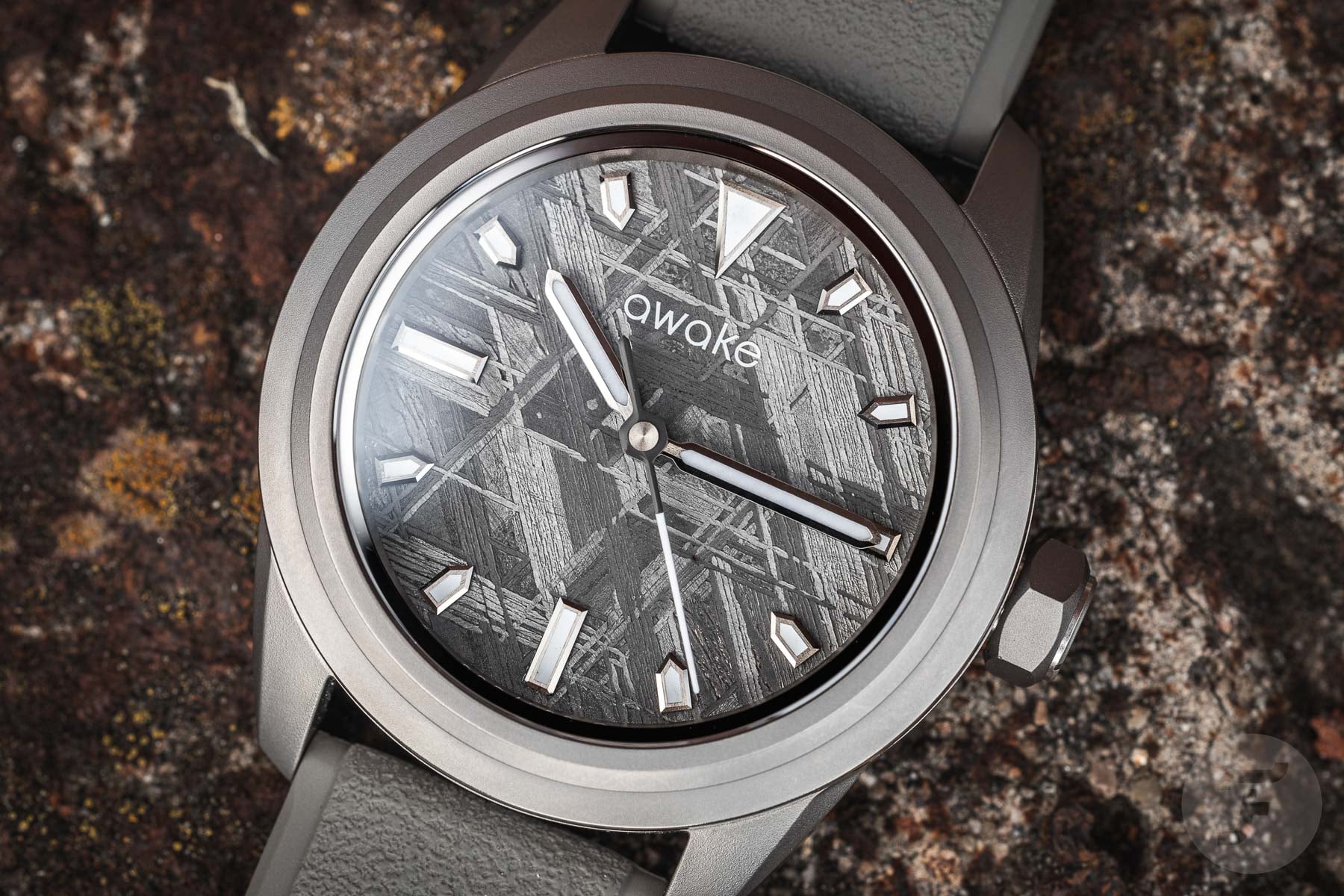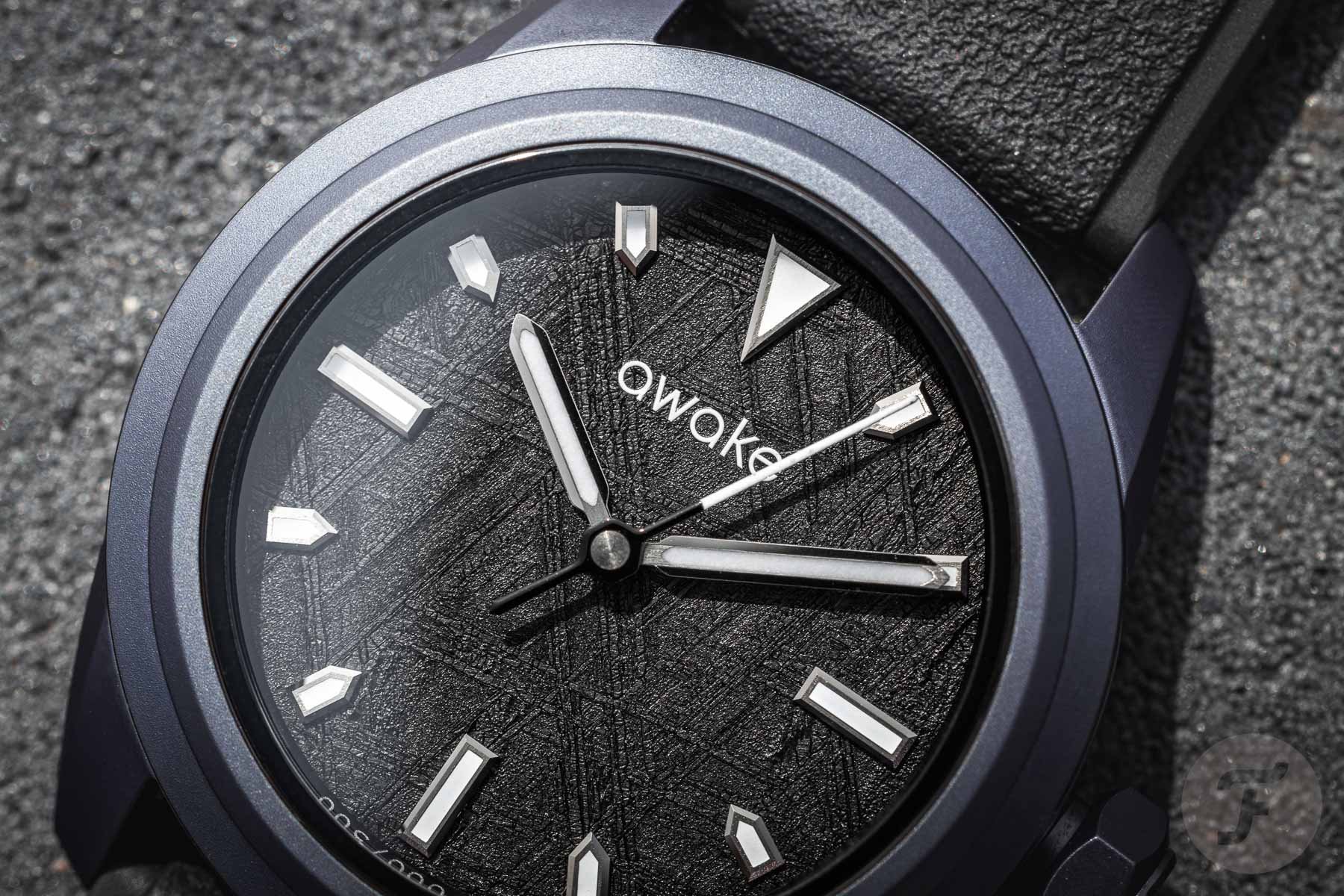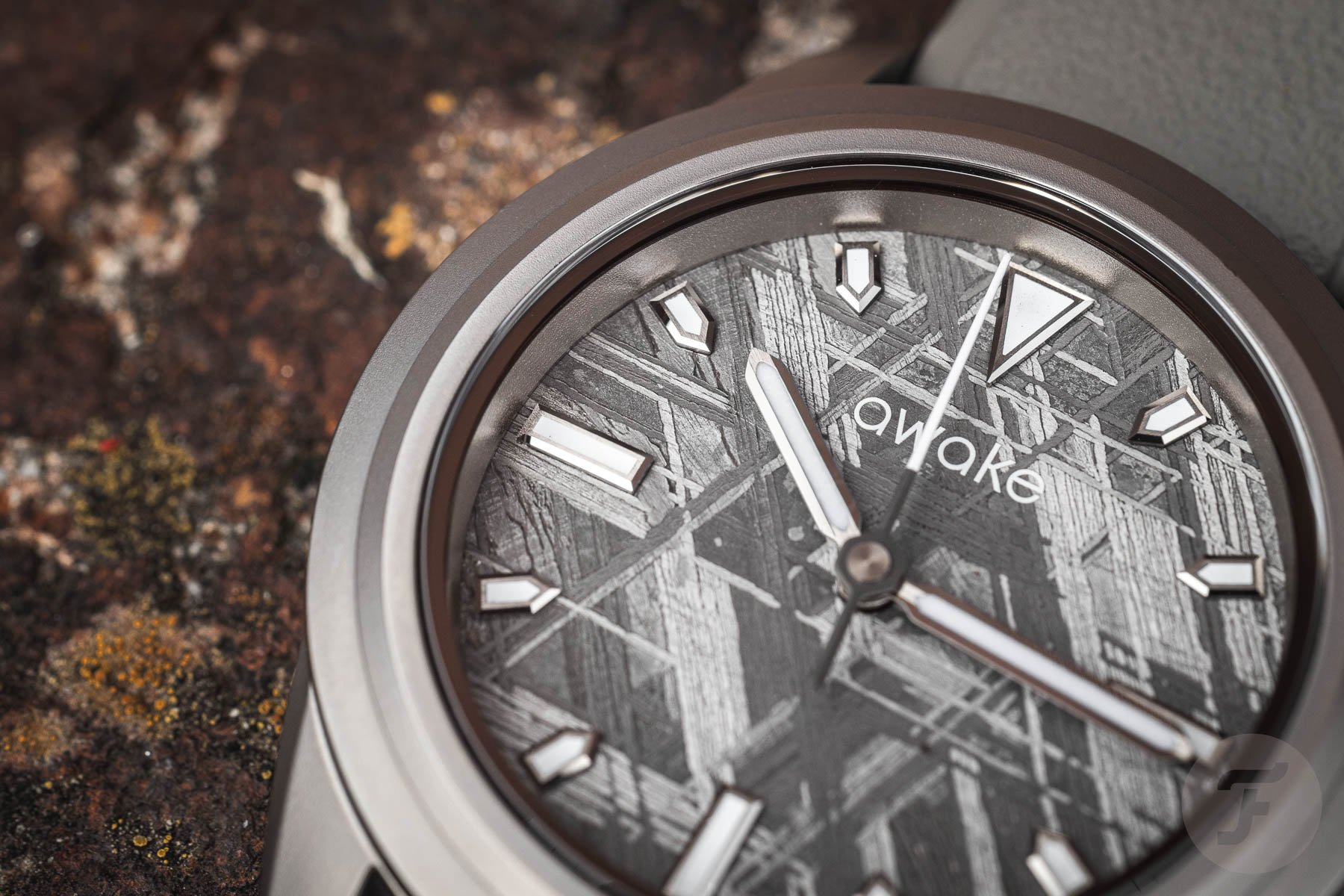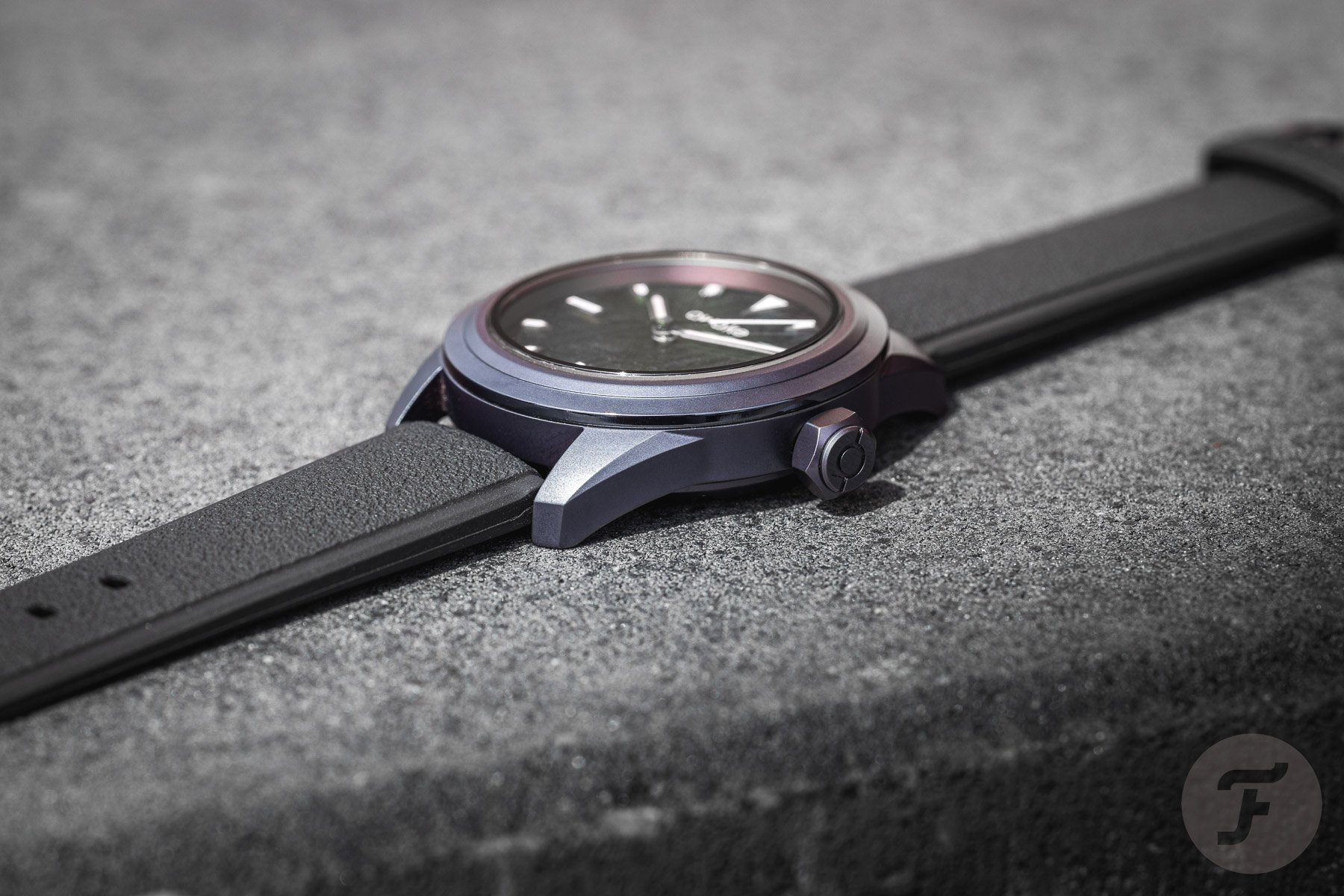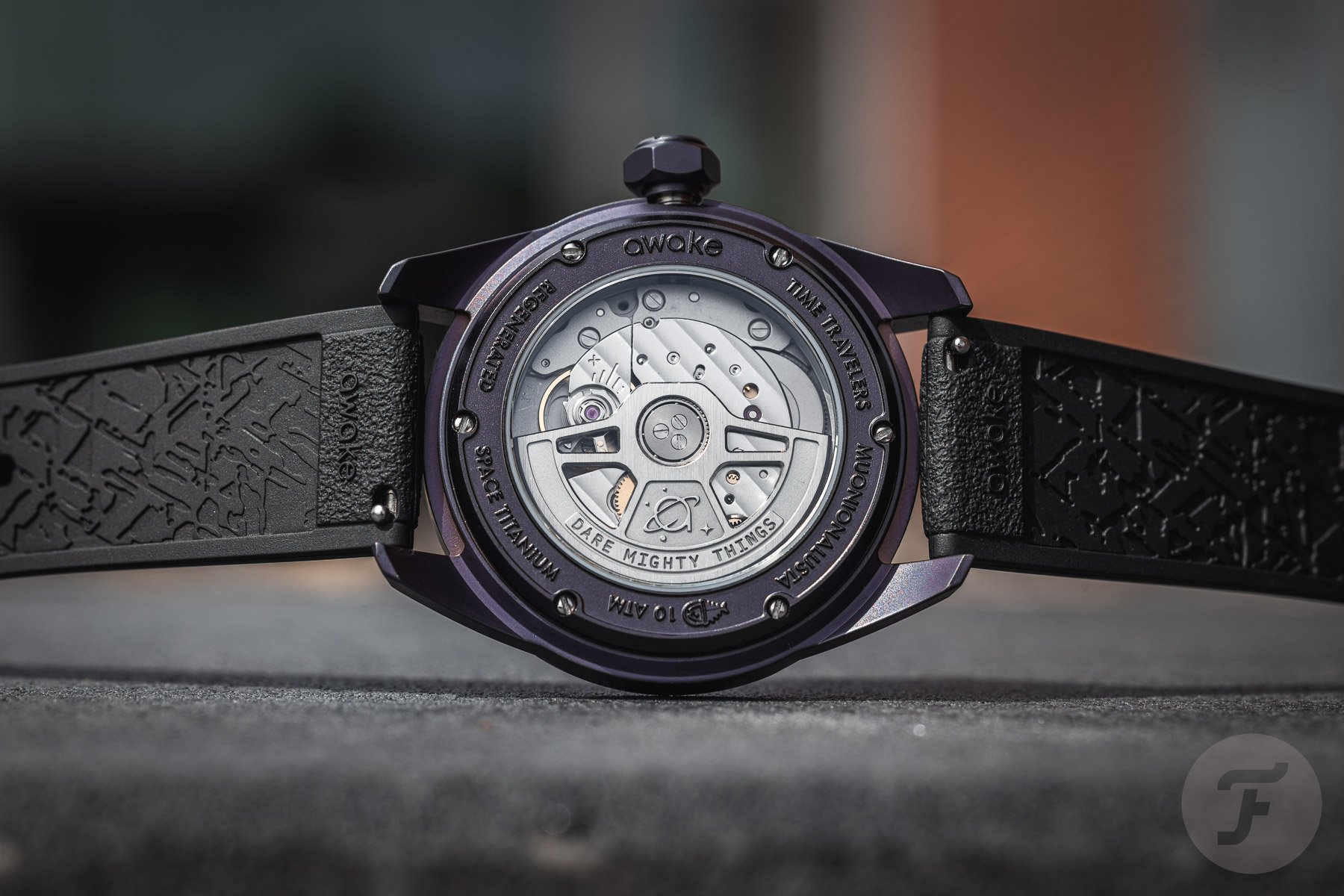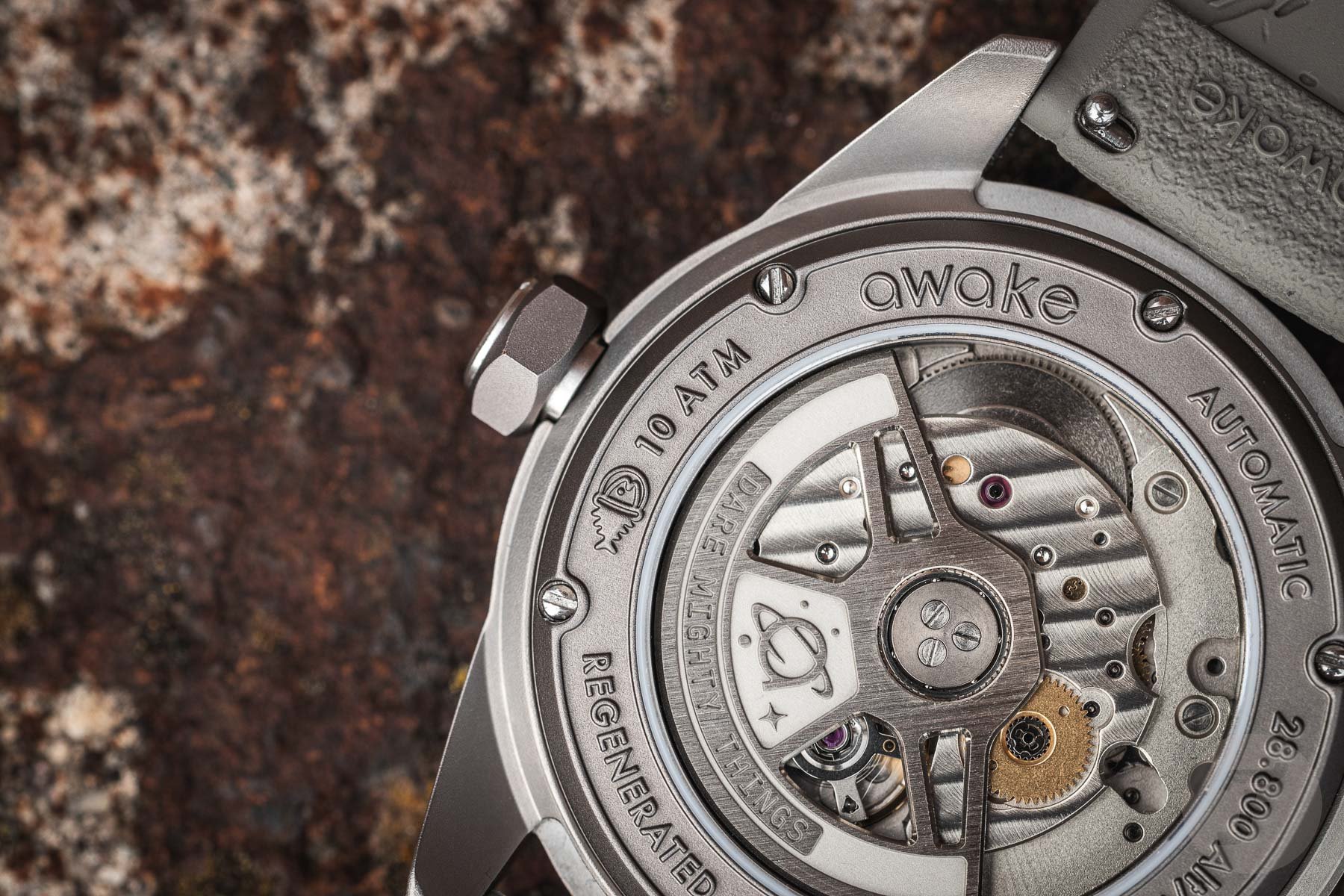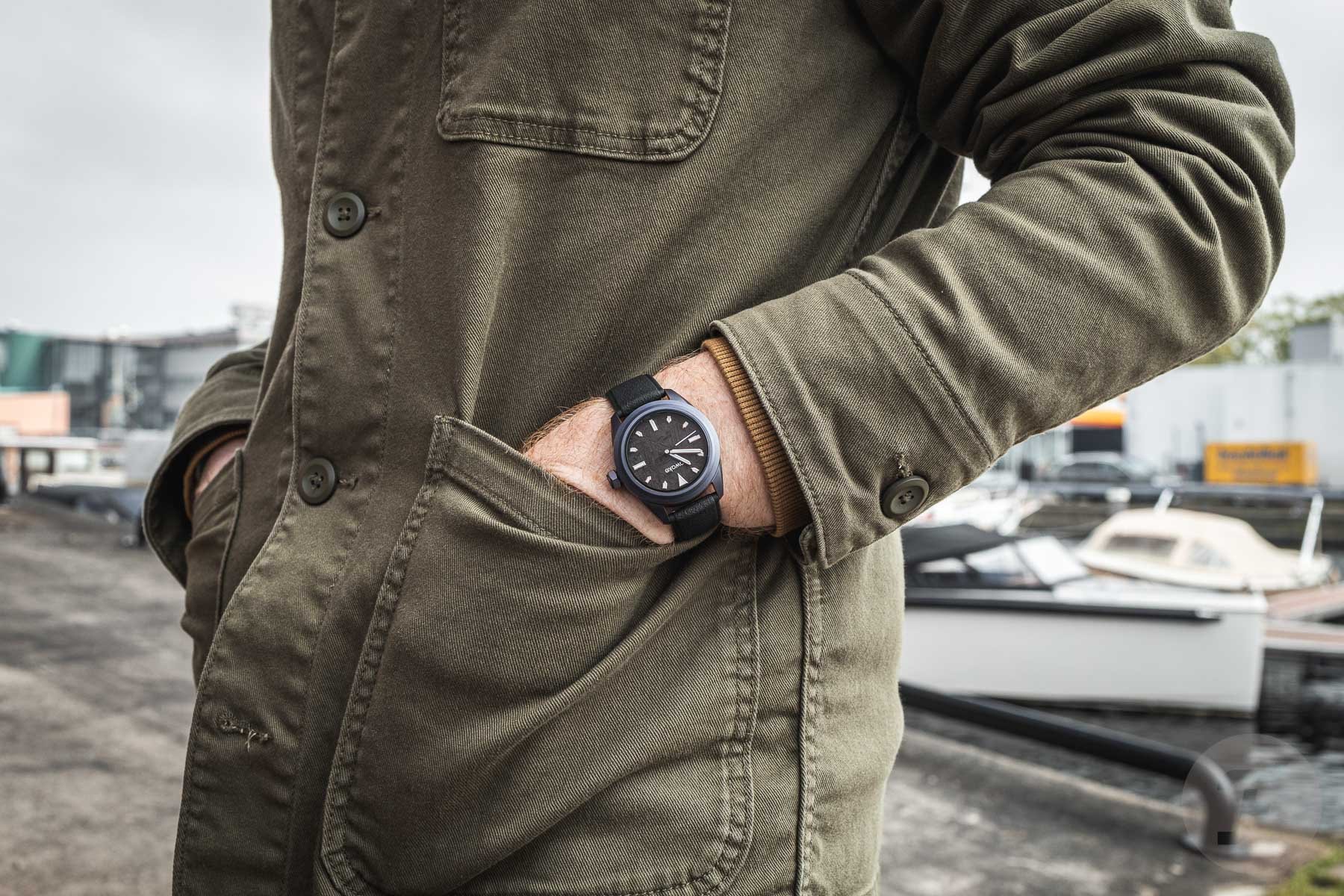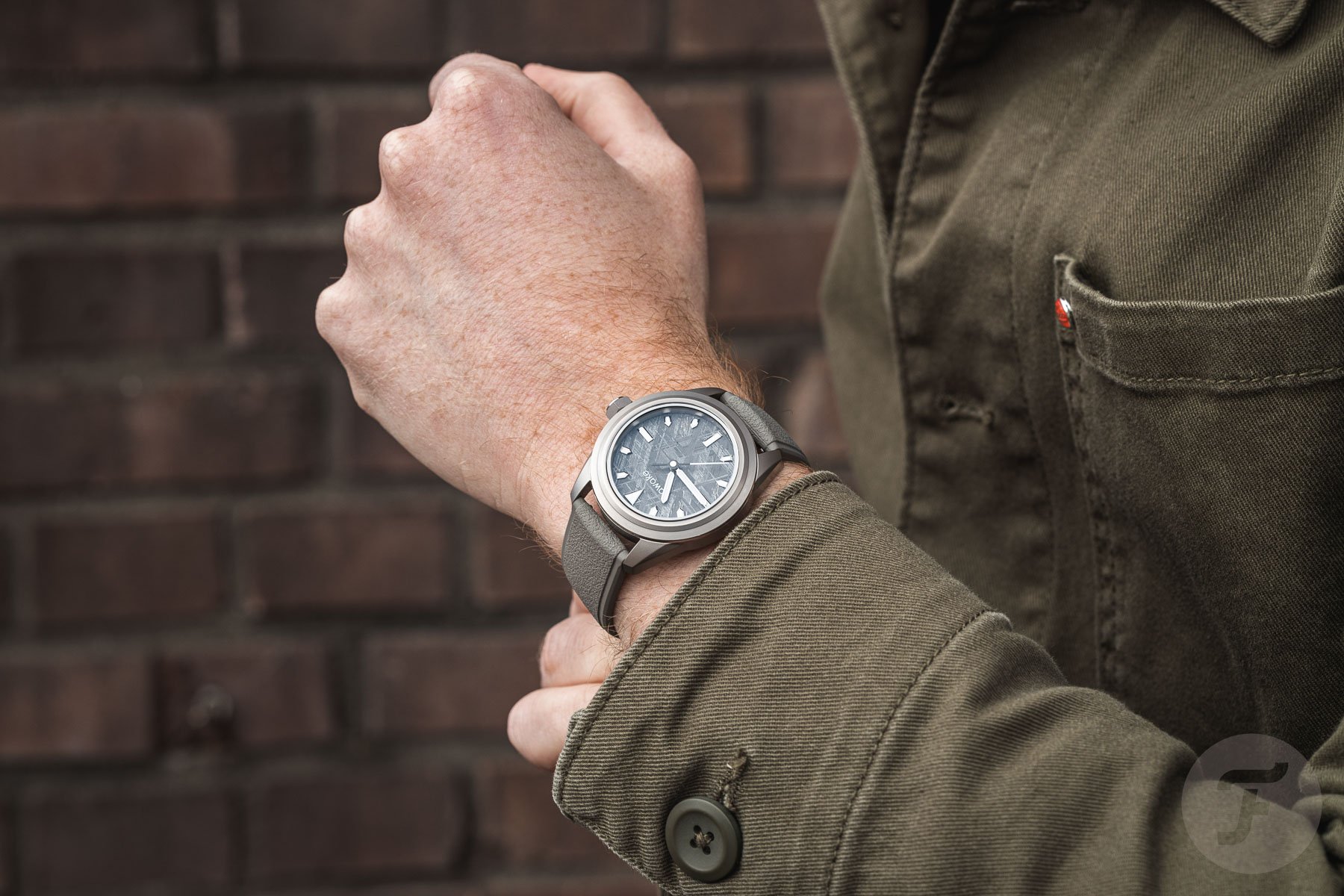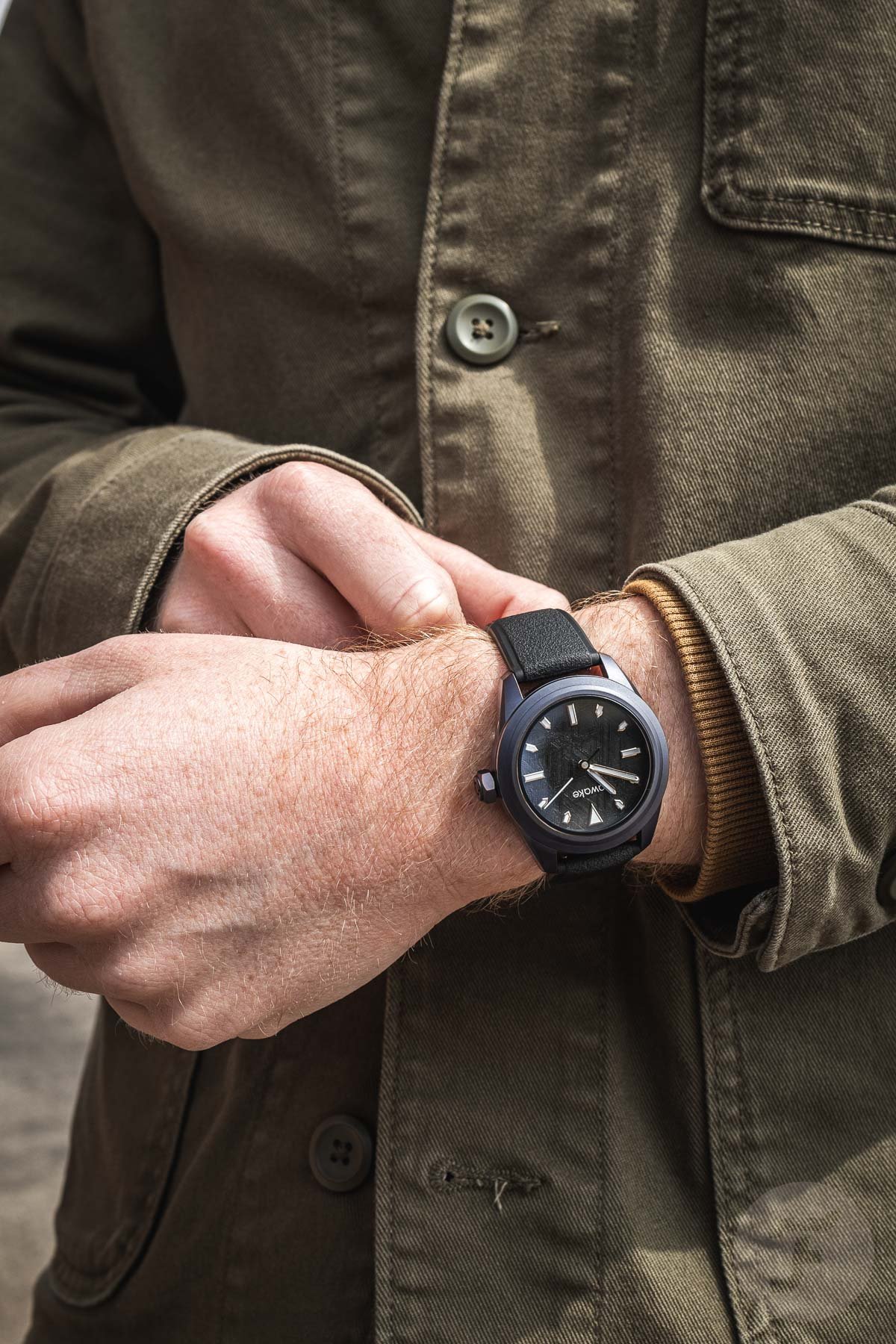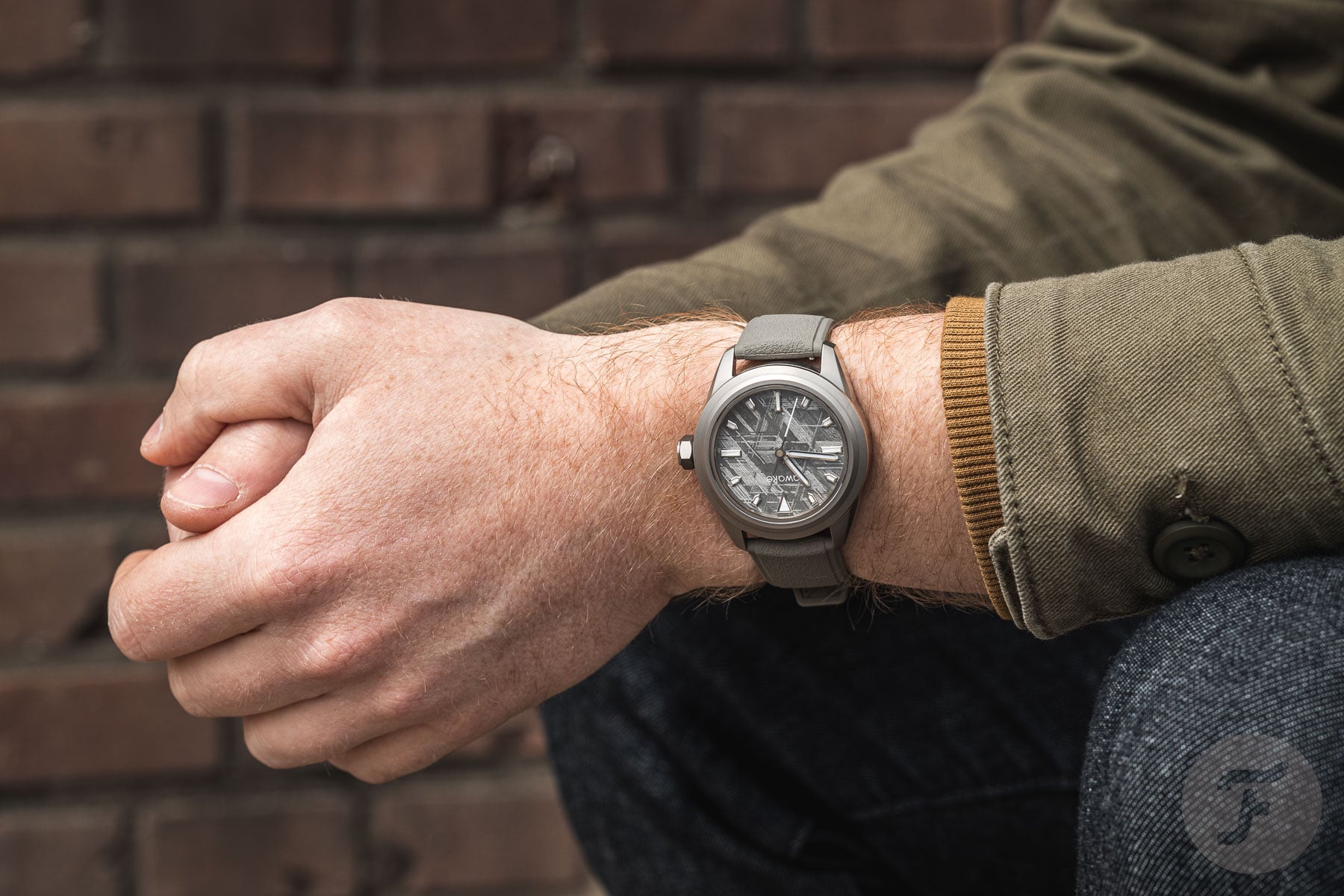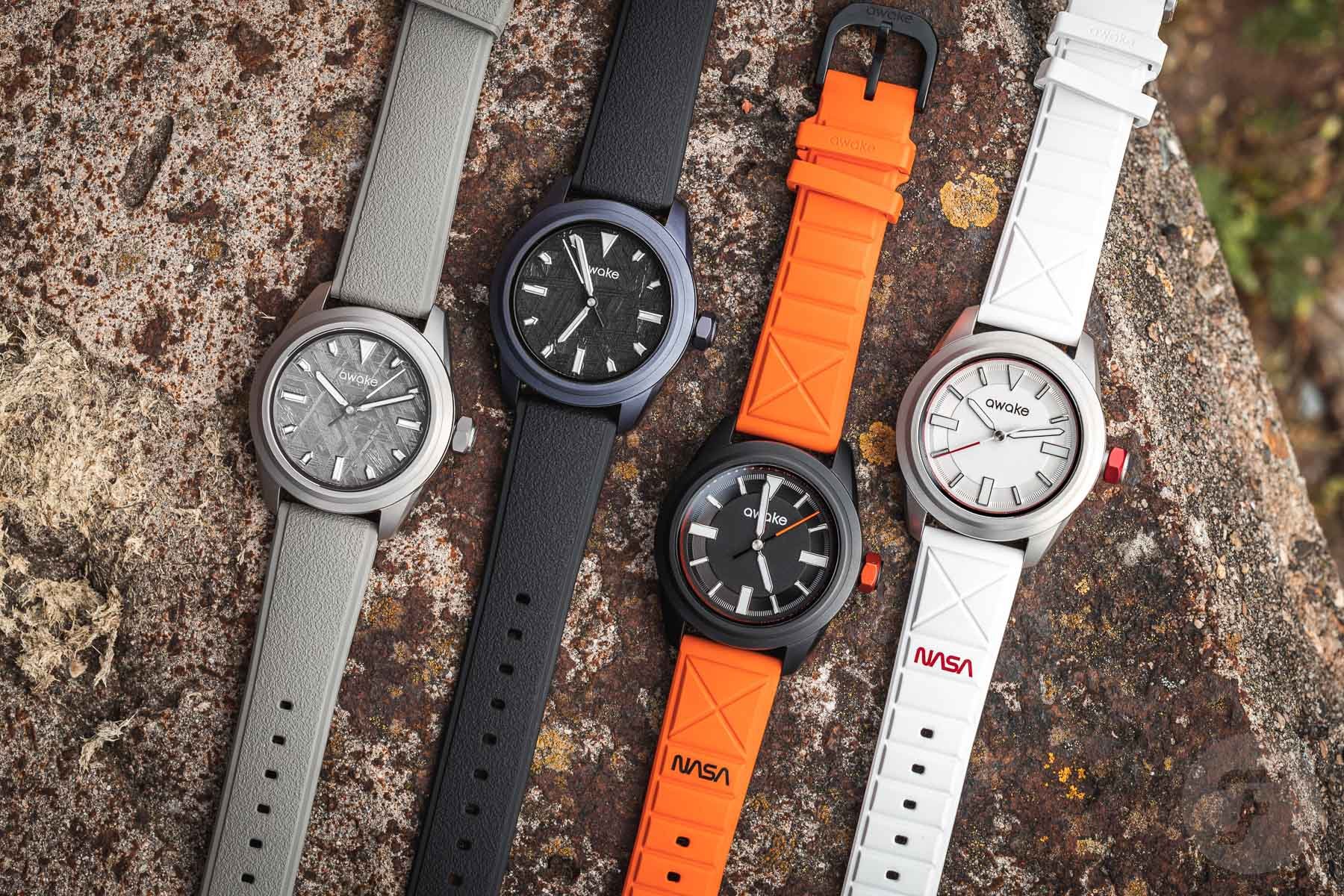Hands-On With The Awake Mission To Earth Collection
Last year, French brand Awake released two NASA-approved timepieces that are part of the Mission To Earth collection. They were called Chapter I and Chapter II. Two months ago, the brand followed up with two new models. The new pieces were introduced as the Time Travelers additions to the Mission To Earth collection, and they stand out thanks to their meteorite dials. I had a chance to go hands-on with all four Mission To Earth models to find the commonalities and differences between the two series and the four different watches — and to find my favorite, of course.
The Awake Mission To Earth Chapter I is a watch that I had seen online quite a bit before I actually got to experience the timepieces up close. Not only did Thor write an introduction article about the white NASA-approved model last year but it was also covered quite extensively in the media. I must admit that the model stood out immediately thanks to its NASA connection and the eye-catching white and red colorway. Therefore, it was the model that I immediately thought of when presented with the chance to check out all four of the brand’s watches. All of these four have a distinct presence, though they are obviously connected by their DNA. Time to find out more.
The Awake Mission To Earth collection
As mentioned, the Awake Mission To Earth collection consists of four timepieces. Two NASA-approved models, Mission To Earth Chapter I and Chapter II, were released last year. With its red and white color scheme, the Chapter I model connected the watch not only to NASA but also to Omega’s Speedmaster Alaska Project Limited Edition. That is one of my favorite watches of all time, so a visual connection to it is far from wrong in my eyes. It’s also why the Chapter I timepiece immediately caught my attention when it was first released and most likely why it left an imprint in my brain.
The second in the series was the Chapter II: Nightfall, which also carried the NASA branding. Essentially, it was the same watch but with a different aesthetic, and I thought the combination of a black case with an orange strap and accents made for quite a compelling timepiece. The watch also came with a black rubber strap, making it very stealthy, but the orange strap is definitely the combination that makes it pop.
The connection to the NASA HERA program
Explaining the details of the watches also means explaining the connection to NASA. Awake’s mission statement says that the brand wants to raise social awareness, in this case, to preserve our planet. According to the brand, six decades of NASA technology have given astronauts a unique perspective on our planet that has revealed its beauty. It’s that realization that has given the Mission To Earth collection its purpose and name. It’s a rather abstract story that definitely has great intentions but stretches the usual idea and romance of NASA that most people think of when exploring space.
But it does get more concrete than that. NASA picked both watches as the official timepieces for the Human Exploration Research Analog (HERA) program. It will allow researchers to study the adaptation to isolation and remote conditions of astronauts on a mission in space. The program takes place at Johnson Space Center in Houston, Texas. HERA is a unique 650-square-foot habitat spread over two floors and a loft, designed to serve as an analog for isolation, containment, and remote conditions in exploration scenarios.
Mission To Earth Chapters I and II sold out
As you can see, the watches look quite compelling. Besides the colors of the Chapter I model, the contemporary looks of the case and dial make it easy to like them. The watches look very different despite featuring the same design. So let’s talk specs a bit. Both watches featured the same lightweight case made of recycled titanium, the same dial design in a different color, and a nice NASA-branded strap. The 100m-water-resistant case measures 40mm in diameter and has a 20mm lug spacing.
Standout details of the watches’ designs are the angular lugs, the colorful screw-down crown, and the dials with their colorful red or orange rehaut and applied markers. If you turn the watches around, you are greeted by screwed-down case backs with an orange or red frame. These reveal the automatic Miyota caliber 9015. This workhorse movement generally powers watches at a slightly lower price point than these models’ asking price of €995. But that did not keep enthusiasts from buying the Awake Mission To Earth Chapter I and Chapter II. All 250 pieces of each model sold out. I am not surprised because both of these watches look good and offer a NASA connection that many watch enthusiasts love.
The Awake Mission To Earth Chapter III models
In March of this year, two new models were added to the Mission To Earth collection. The models are called Mission To Earth Chapter III: Time Travelers. Both come with meteorite dials, but thanks to different color combinations, they each look distinct. Despite that, they are definitely family since all four watches have the base design. So let’s talk specifics of these two new models. They come with the same 40mm titanium case.
But the first is the Purple model, which features a purple coating that gives it a unique look. It is paired with a dark gray rubber strap with a purple titanium buckle. I love the stealthy looks of the watch, especially with its special dark meteorite dial. This dial uses fragments from the Muonionalusta meteorite, which hit the earth’s surface about a million years ago. This dial has a somewhat different design with slightly smaller markers than the two NASA models. The hour markers shimmer in the light. It’s a great feature as it draws you back into the dial.
The beauty of meteorite dials
As you may know, thanks to meteorite’s characteristics, every dial produced for these watches is unique. The famous Widmanstätten pattern on the dial occurs naturally, and it differs for each of the 500 models in both variations. This brings us to the second model, the Grey one, which comes with the “regular” titanium case and features a lighter-colored meteorite dial. Once again, its hour markers are more modestly sized than on the NASA models, giving the meteorite dial plenty of room to shine. But the way the hour markers shimmer in the daylight is quite compelling. On multiple occasions, I found myself turning my wrist this way and that to see the indices glimmering in the sun.
When it comes to a preference, I must say that I like the overall looks of the darker Purple model better. Nevertheless, the Grey model is definitely better when it comes to the impact of the meteorite dial. It brilliantly reveals the unique meteorite pattern, making the dial the star of the show. Both watches come with a dial-matching strap made of a bio-based polymer derived from castor, a natural plant. I have to say that the straps are nice and flexible and feature a similar texture as the Widmanstätten pattern on the dials.
More color on the case backs
If you turn both watches around, you are again greeted by a display case back with frames in the same color as the cases. They give a good view of the modified Miyota 9015 that also powered the first two models in the collection. The automatic movement operates at 28,800vph, has 24 jewels, and provides a 42-hour power reserve. It’s a movement that we see smaller brands use a lot. This caliber has an advertised accuracy of -10 to +30 seconds per day. Generally, I am not a stickler for accuracy when it comes to affordable watches. I like for a movement to be reliable first and foremost. But there is one thing that I don’t like about this caliber — the sound of the rotor spinning when you move your wrist quickly.
Additionally, there are so many offerings out there with movements that offer more in terms of quality and accuracy. This is especially important when considering the premium you have to pay for these meteorite dials. While the NASA models sold for €995, the Time Travelers models retail for €1,325 excluding taxes. That means you enter a price segment where other brands offer COSC-certified Swiss movements. Therefore, you have to fall in love with the looks and materials of these two latest releases, especially knowing that there are so many competitive brands out there offering watches with better movements.
Wearing the Mission To Earth collection
An added feature of Awake’s watches is NFC and blockchain tech. As Michael Spencer explained in the introduction article of these two watches, the Chapter III models are no exception. The NASA models’ NFC technology focused on the Earth’s view from the ISS. These new two Chapter III models, however, allow the wearer to track asteroids that are nearest to us in the Solar System. When read by a smartphone, this STISS–ID Glass technology embedded in the sapphire links to NASA, allowing the wearer to discover asteroids’ names, sizes, compositions, and past and future trajectories. It’s a cool feature that some people will absolutely love, and it adds to the wearing experience of the watch.
Speaking of which, it is mainly about wearing these watches. And I must say that experiencing all four watches up close has been a good experience. Overall, I have to say that these watches are nicely made and super comfortable on the wrist. That is partially due to the lightweight titanium cases, ensuring that each model weighs just 85 grams. Combined with the flexible straps, these pieces are very easy to wear. I alternated between them quite a bit during the time the watches were with me. The two that I wore the most were the black/orange NASA version and the purple Chapter III model.
Final thoughts on the Awake Mission To Earth collection
So, do these four watches stand out in a very crowded field of competitors? The Chapter I and II models had the NASA story connected to them, which is a great attraction for many watch fans. While it’s not your regular NASA story of space exploration, it is no surprise that all 500 watches sold out in three days. There is simply something magical to the NASA name. For the Chapter III watches, Awake created 500 pieces of both the Purple and the Grey, doubling the production to a total of 1,000 units. Combined with a significantly higher price, it will be interesting to see whether these two models sell out.
I can honestly say that the dials are impressive. There is a great attraction in the realization that you are wearing a piece of material on your wrist that came from outer space. And the design will definitely attract people who love a modern watch that wears very comfortably. But I would have loved to see more standout elements overall. With these watches, the main attraction comes from different features rather than the overall look of the case and dial. The materials, finish, colors, and straps are all great. But I would have loved to see a stronger design language to make these pieces stand out. As they are, they feel comfortably safe rather than inspired.
What’s next?
Additionally, the choice of movement will lead to debate regarding the price you have to pay. As already stated, many brands offer Swiss movement from, for instance, Sellita or ETA with greater accuracy for the same money. Consequently, it will probably keep people who look for great specs from jumping to buy one of these pieces. Having said that, these watches focus on a bigger story. If you love the looks and the story that these watches tell, they could be for you. Knowing that Awake sold all of the 500 NASA-approved pieces in no time, it’s quite possible that all 1,000 units of these two final Mission To Earth timepieces will sell out too. It will be interesting to see if that happens and what will come after Chapter III for Awake.

